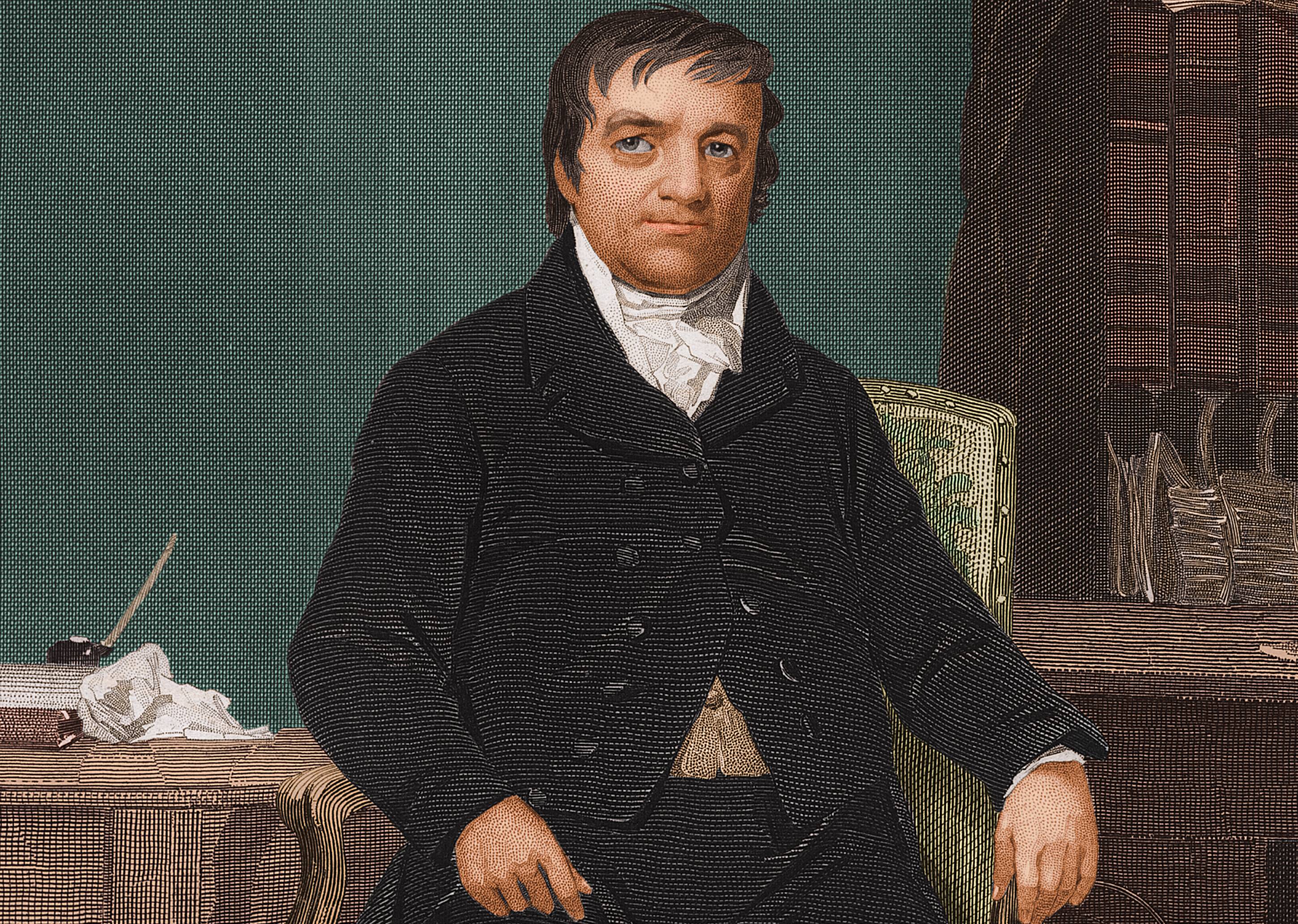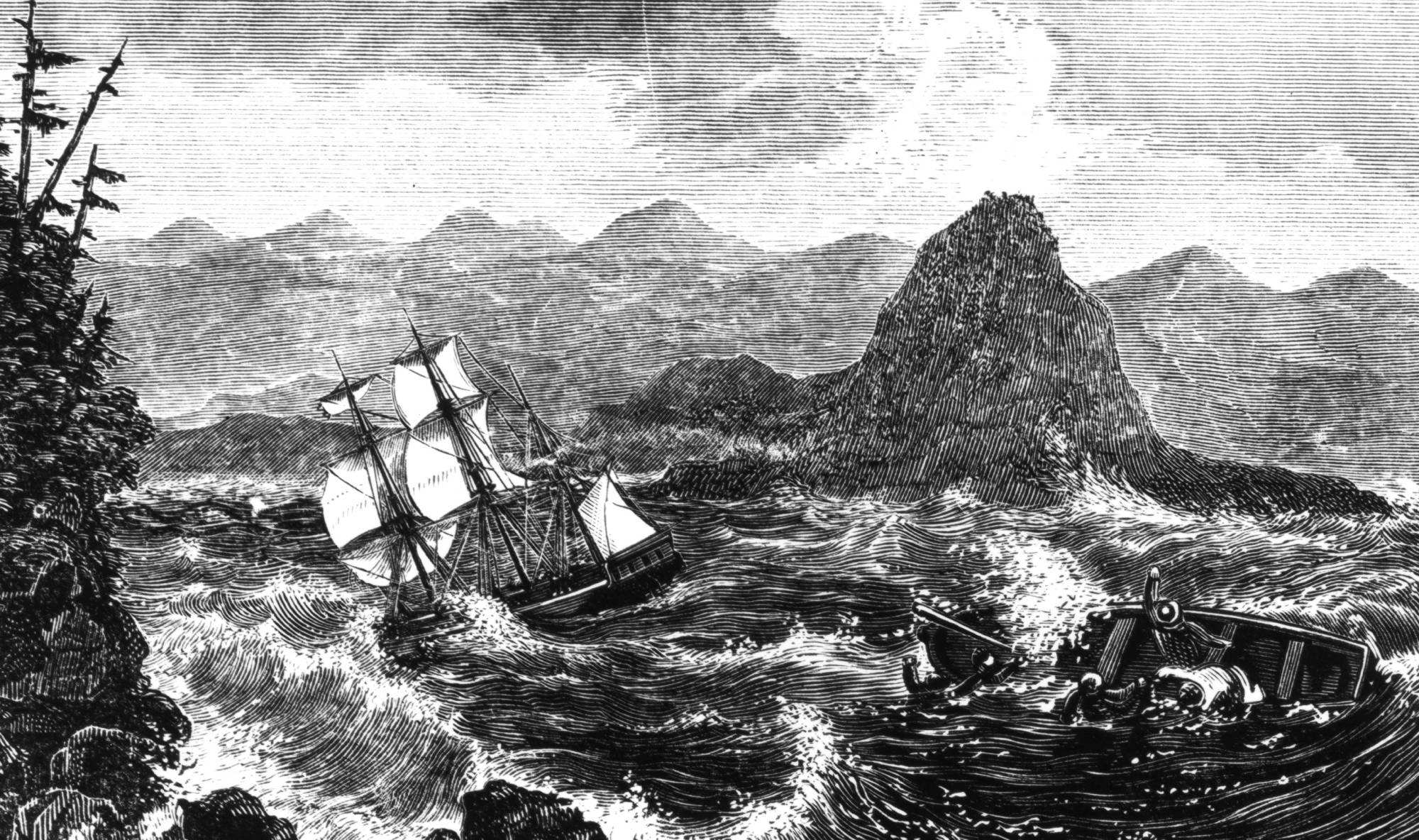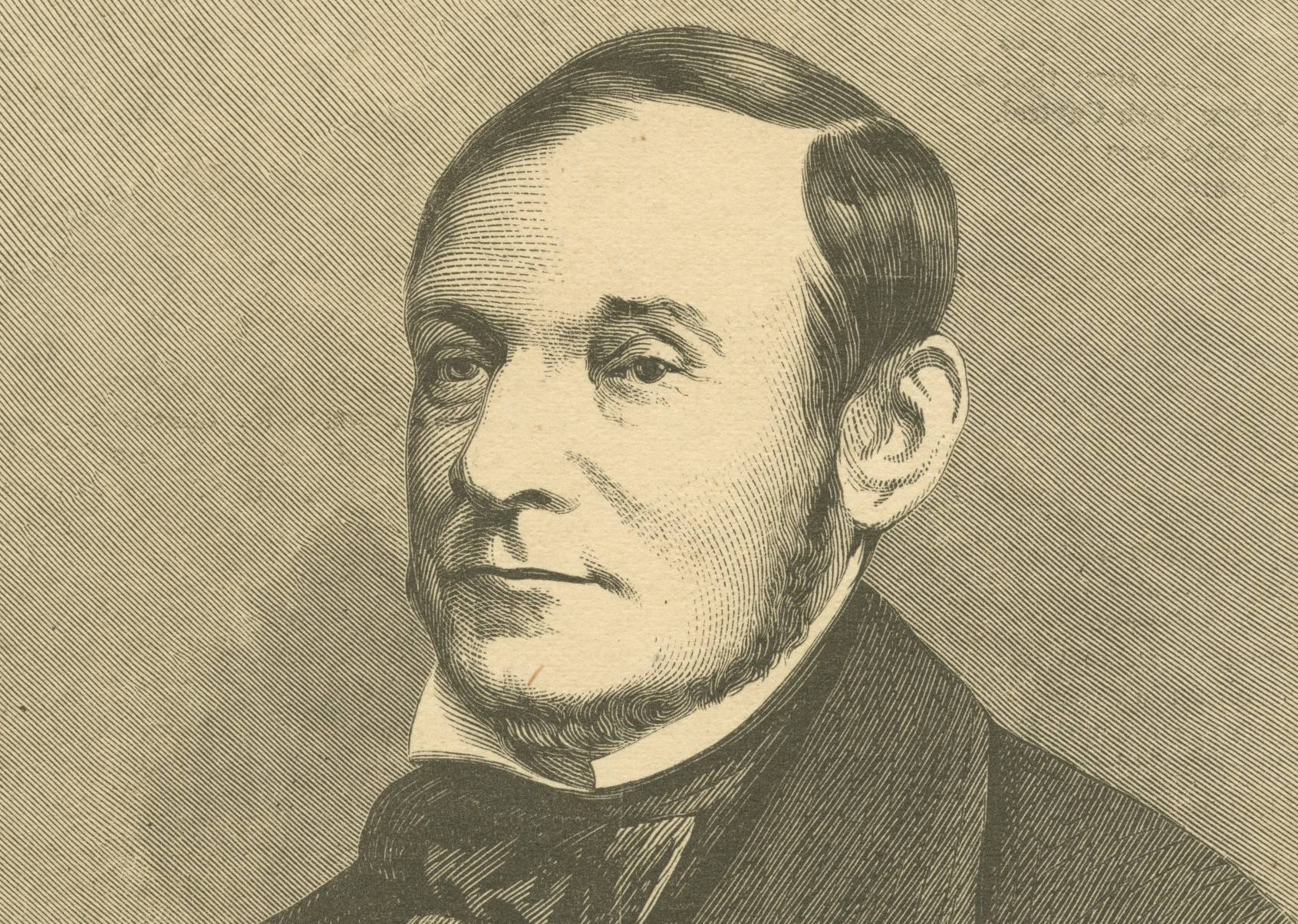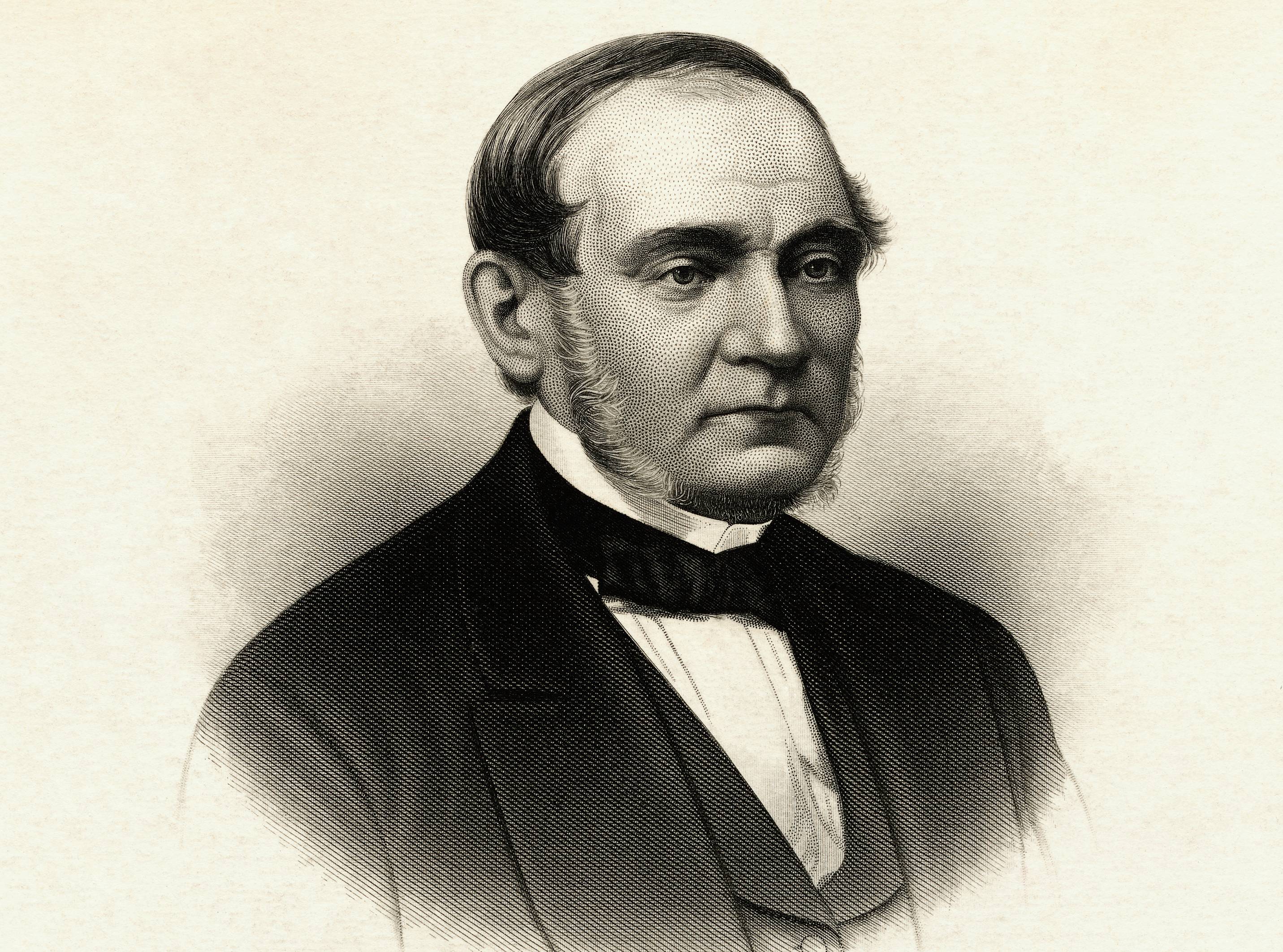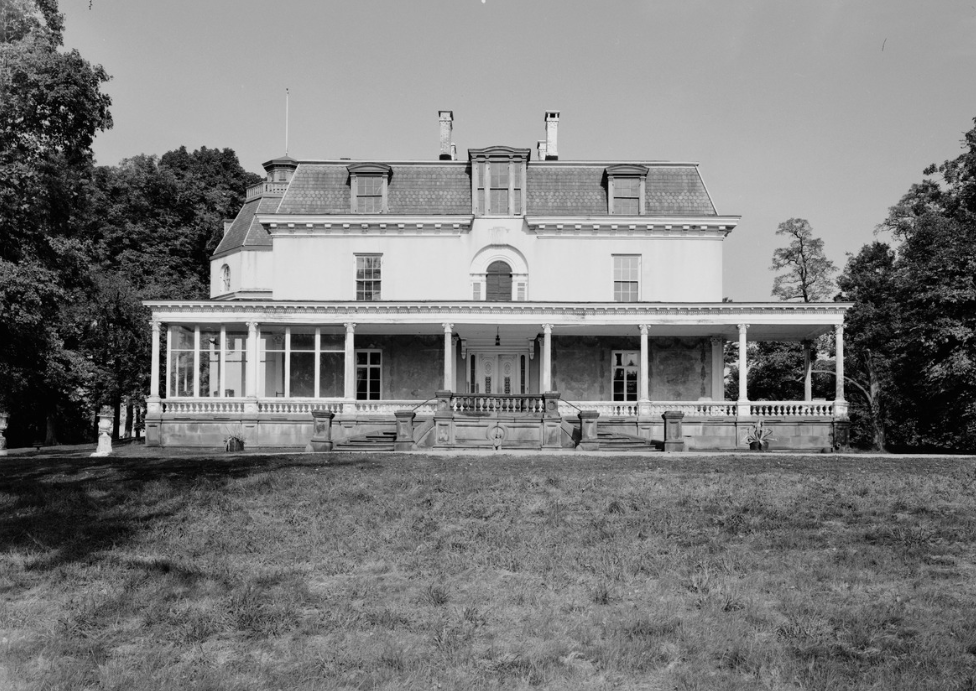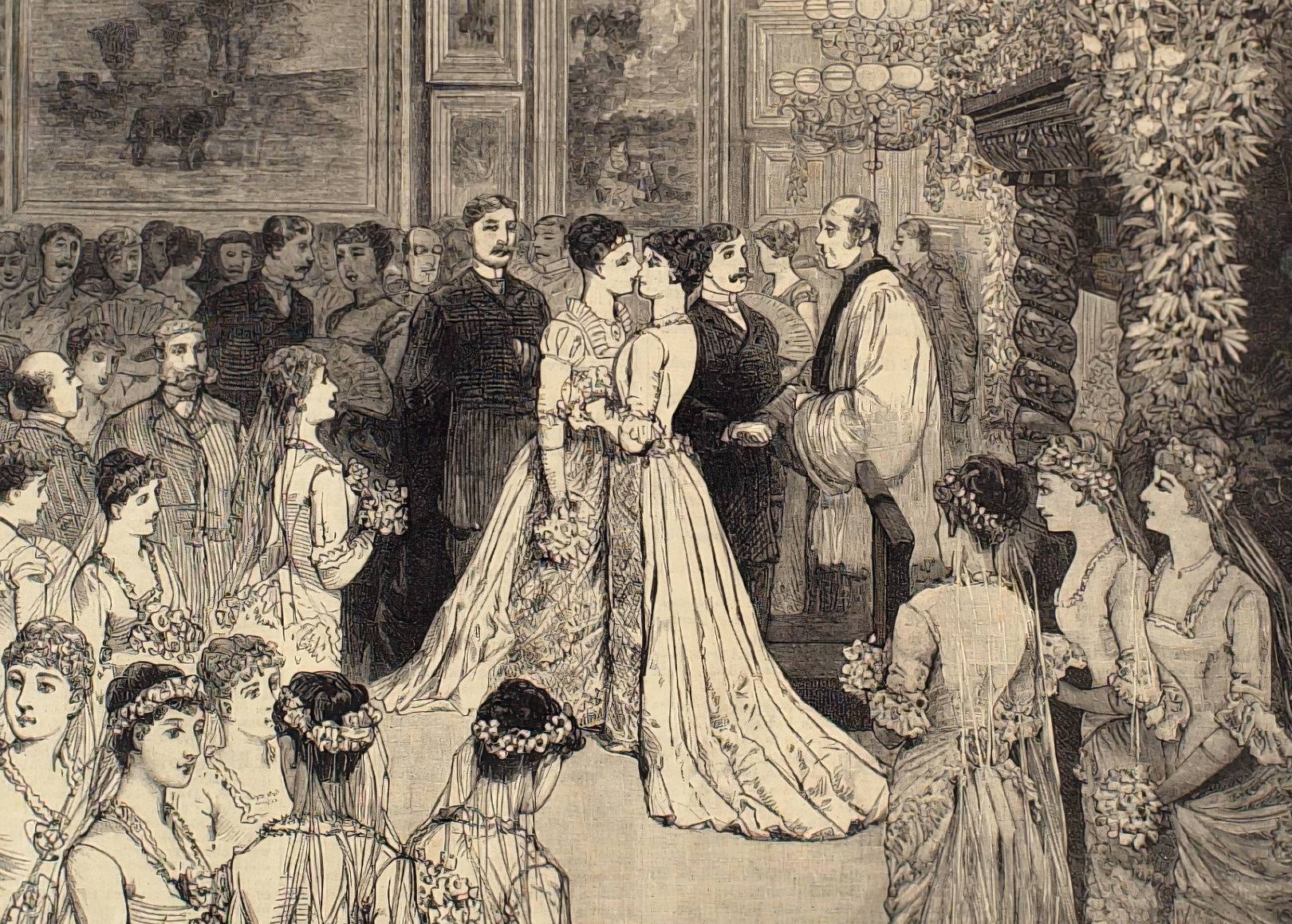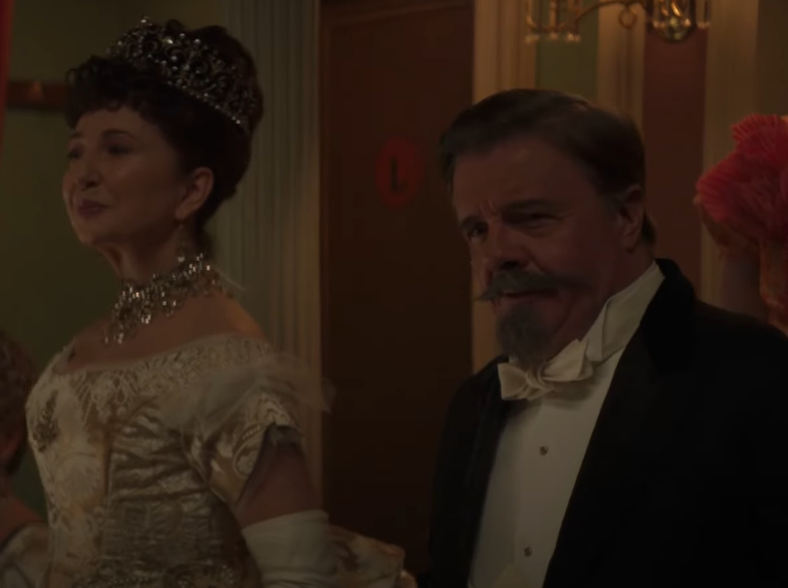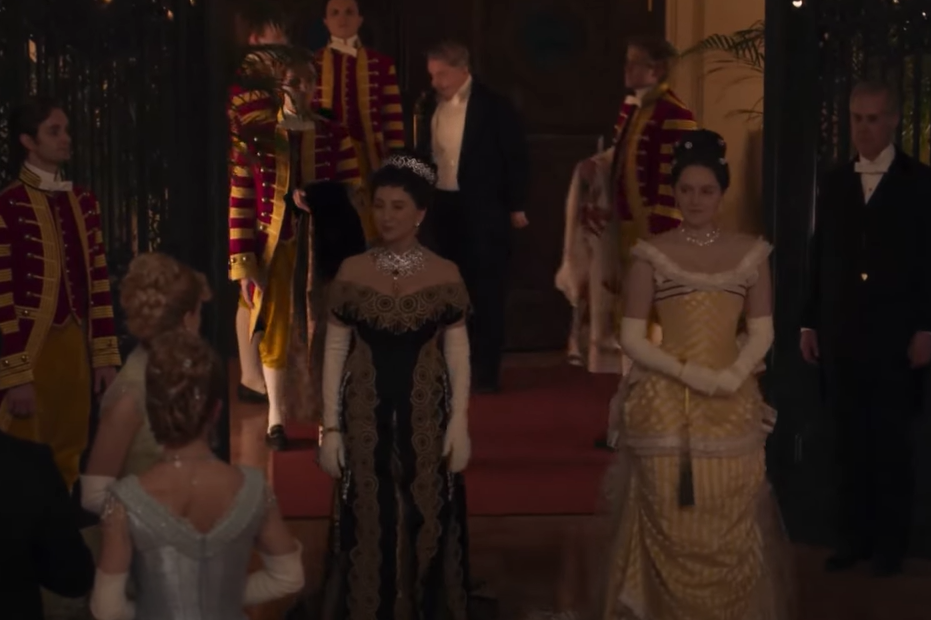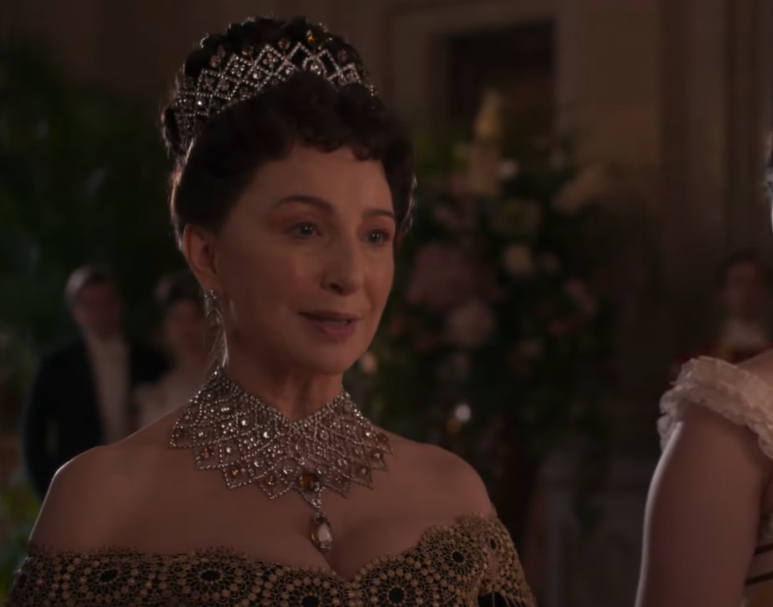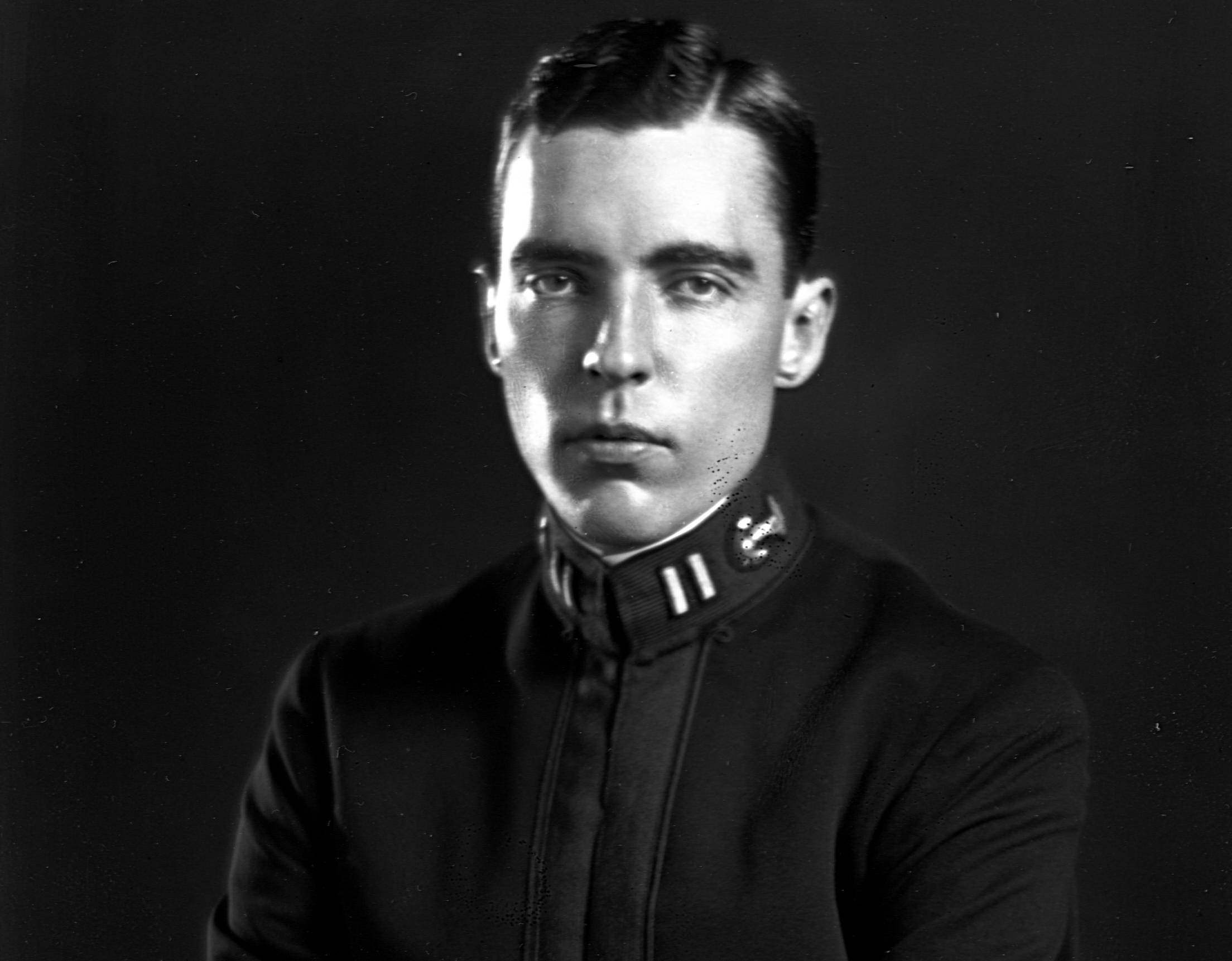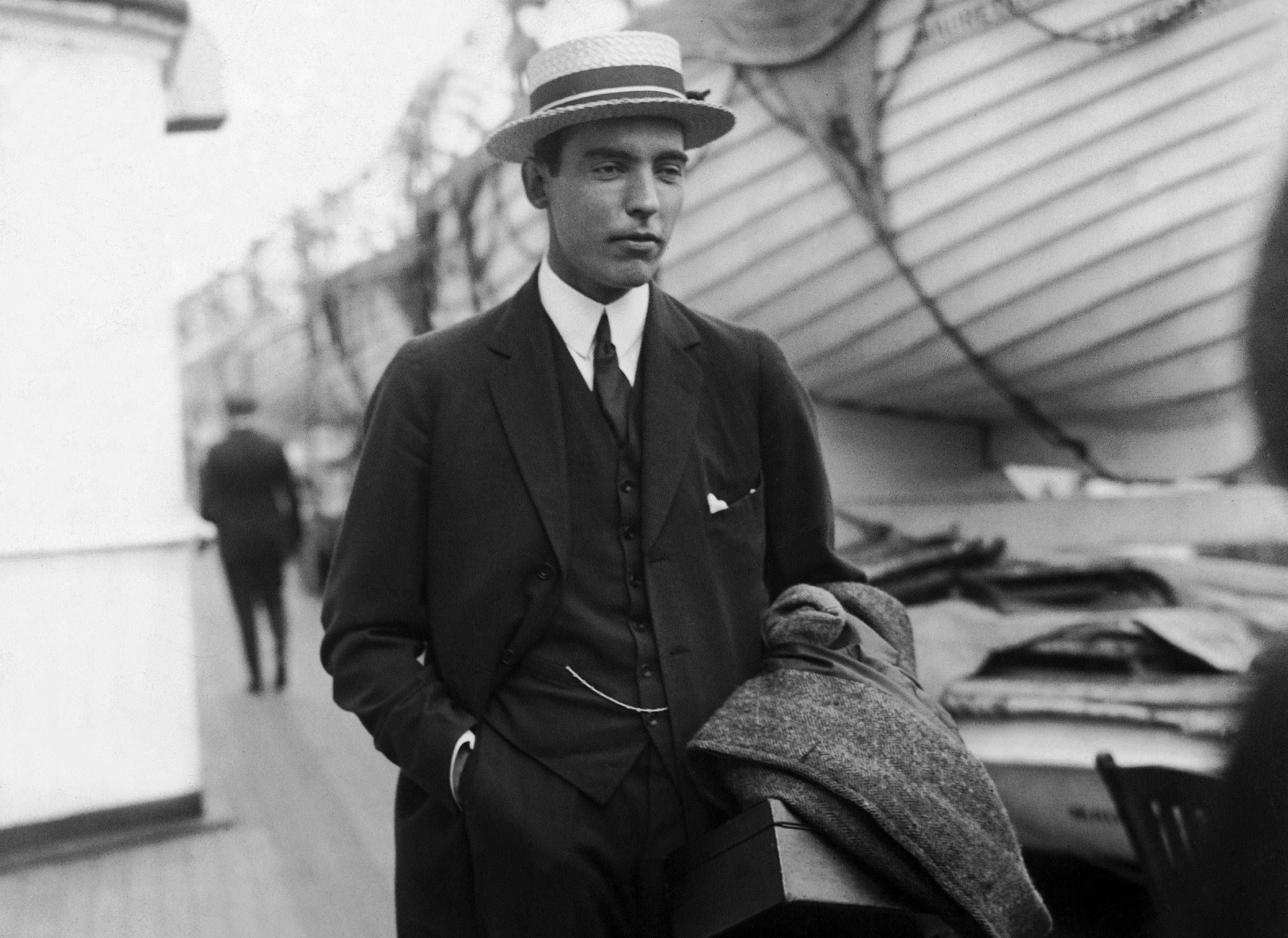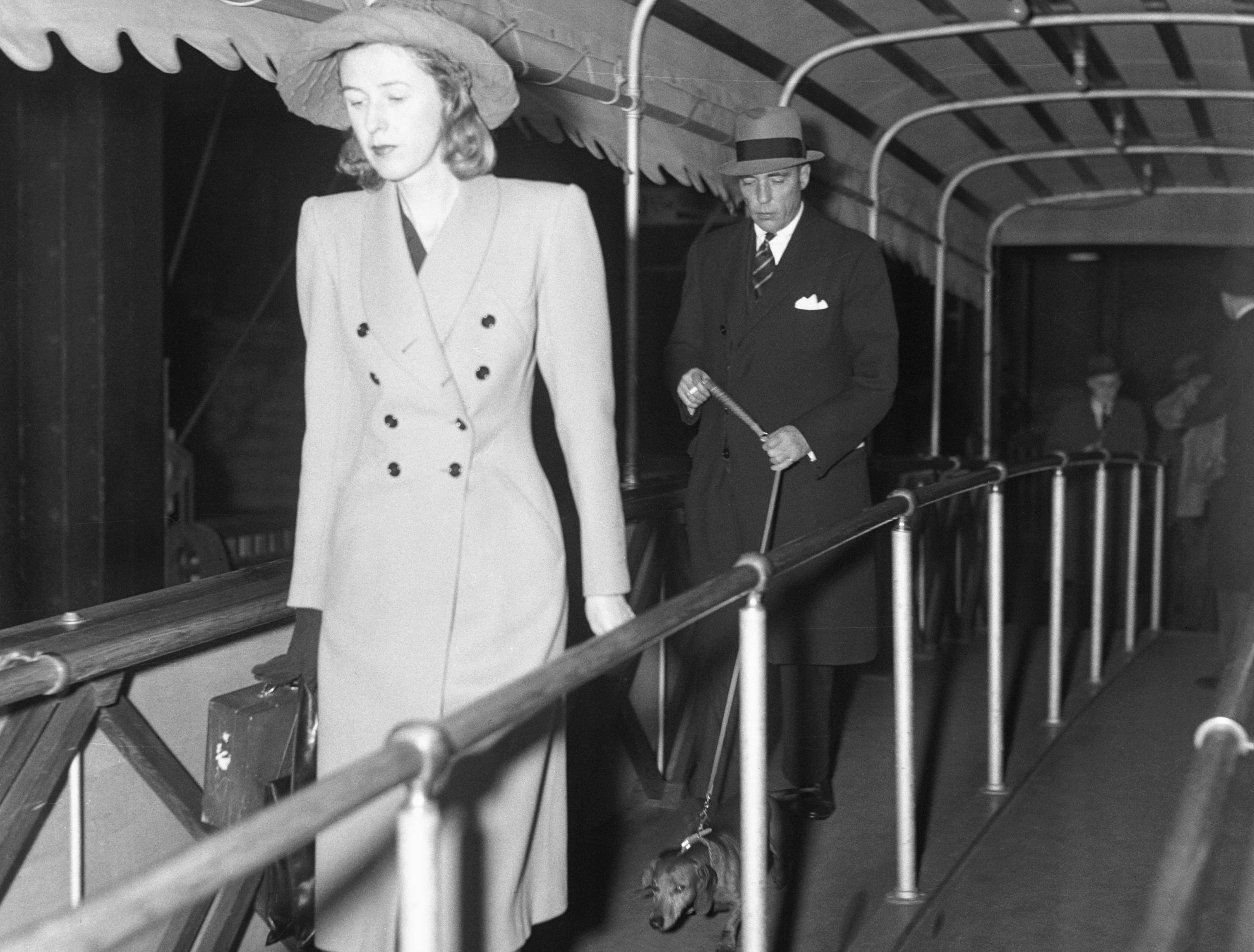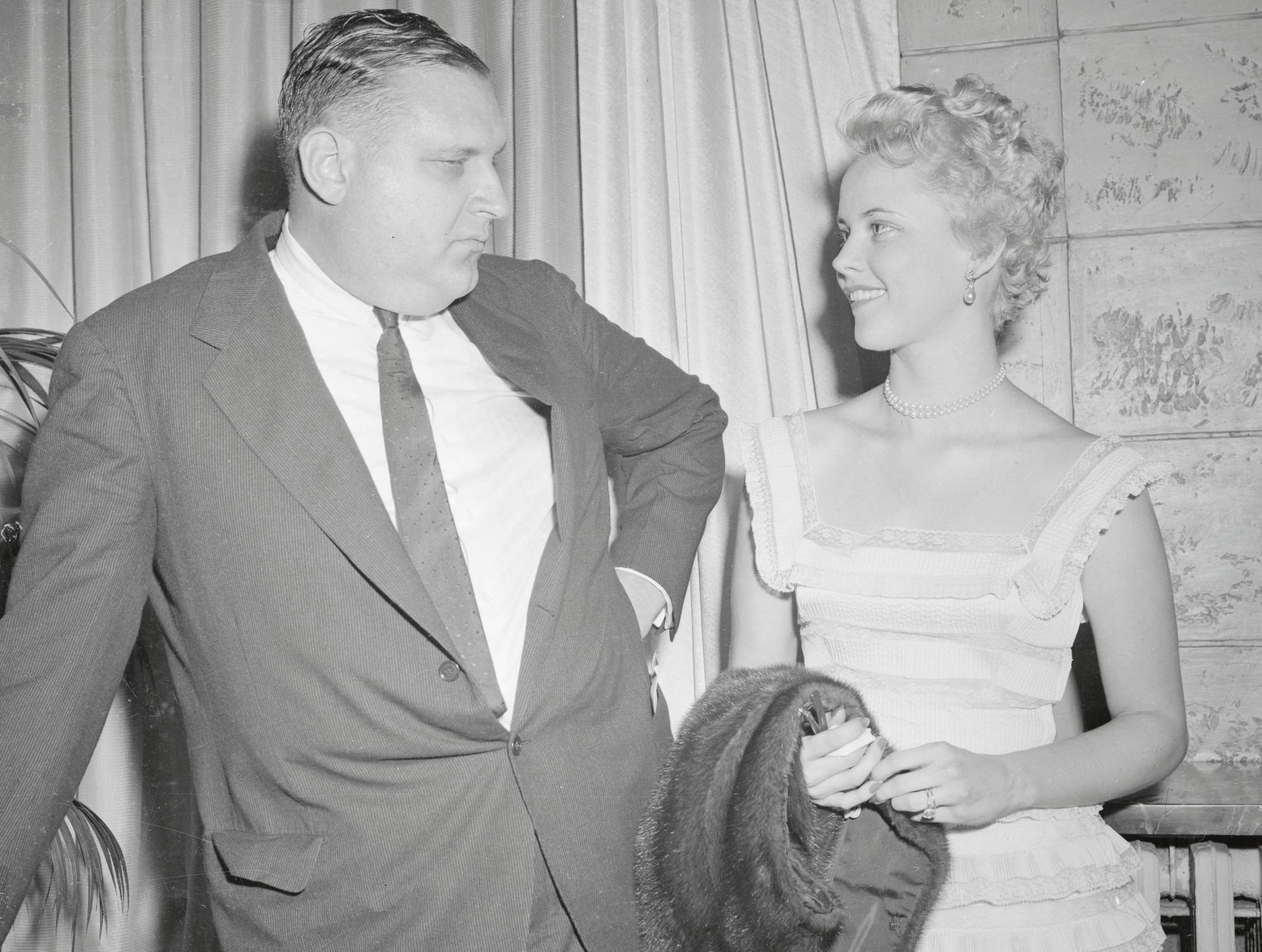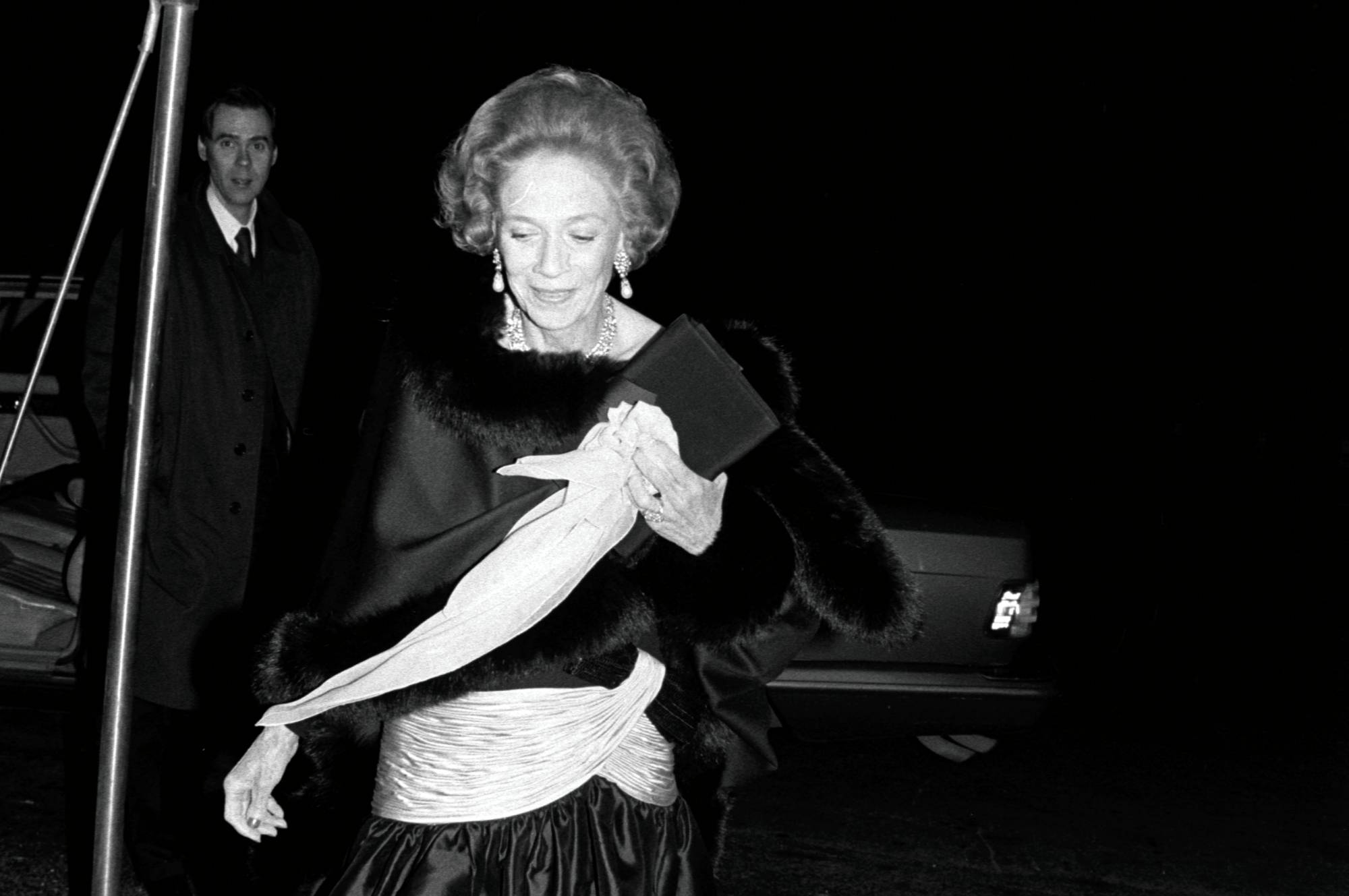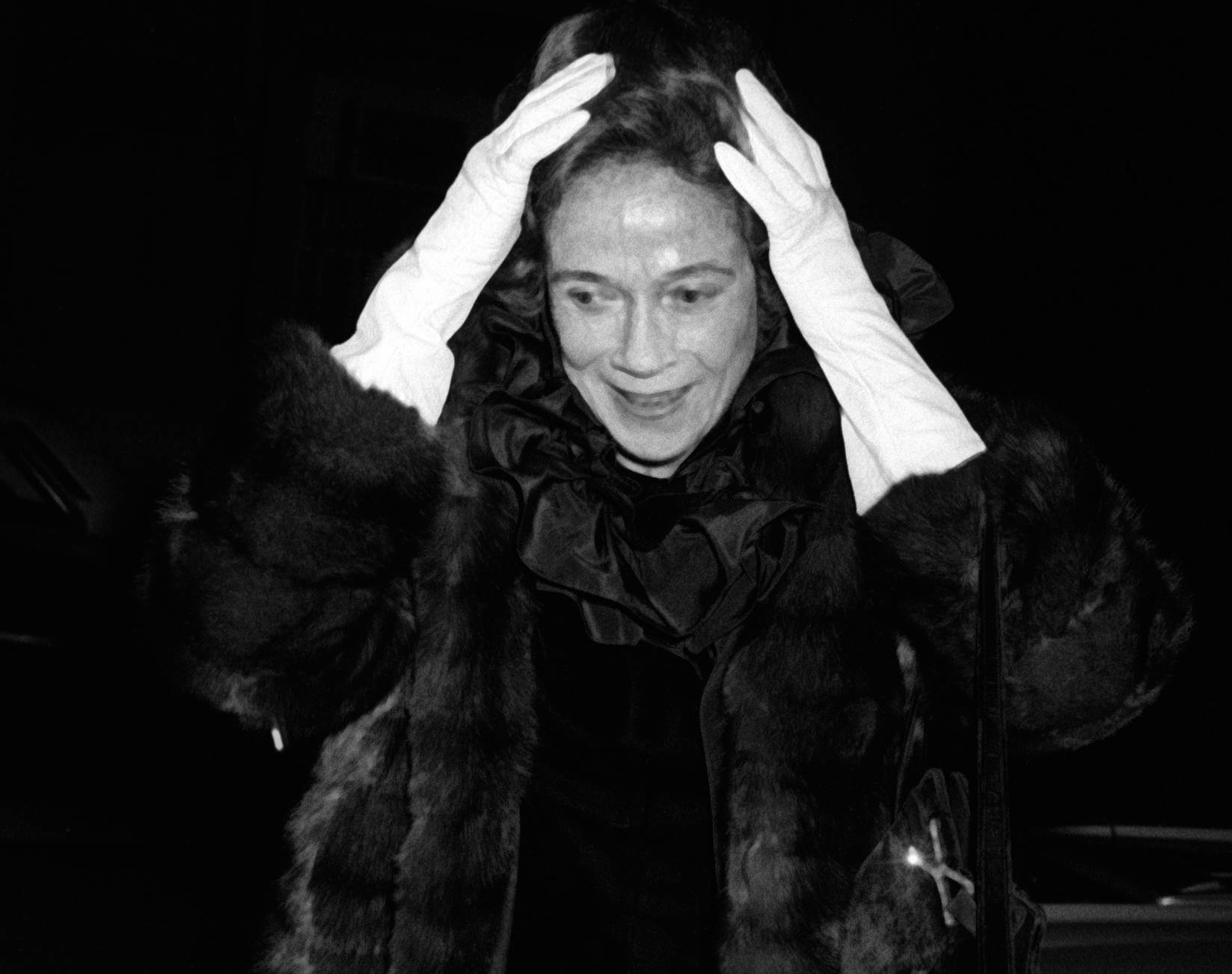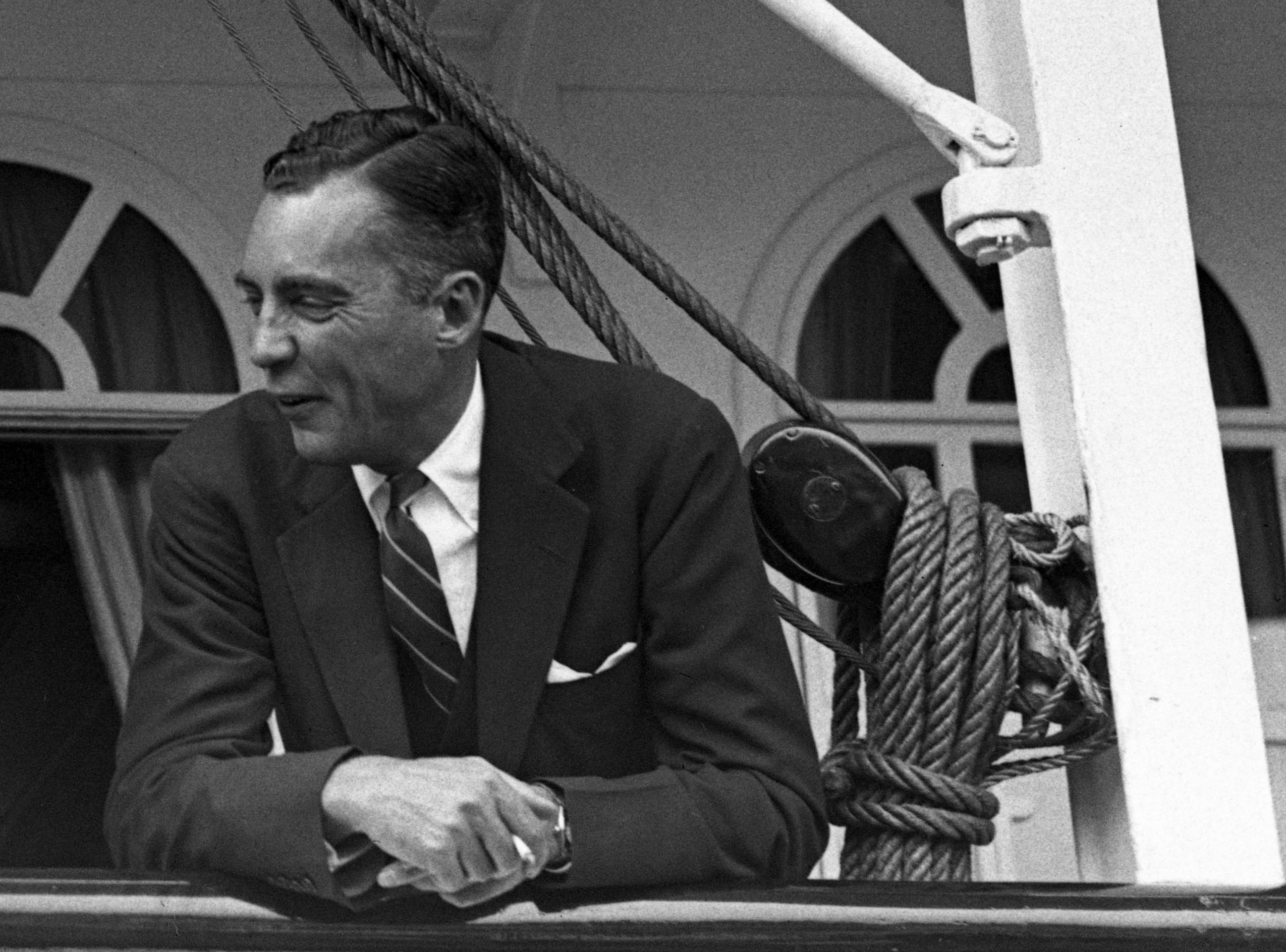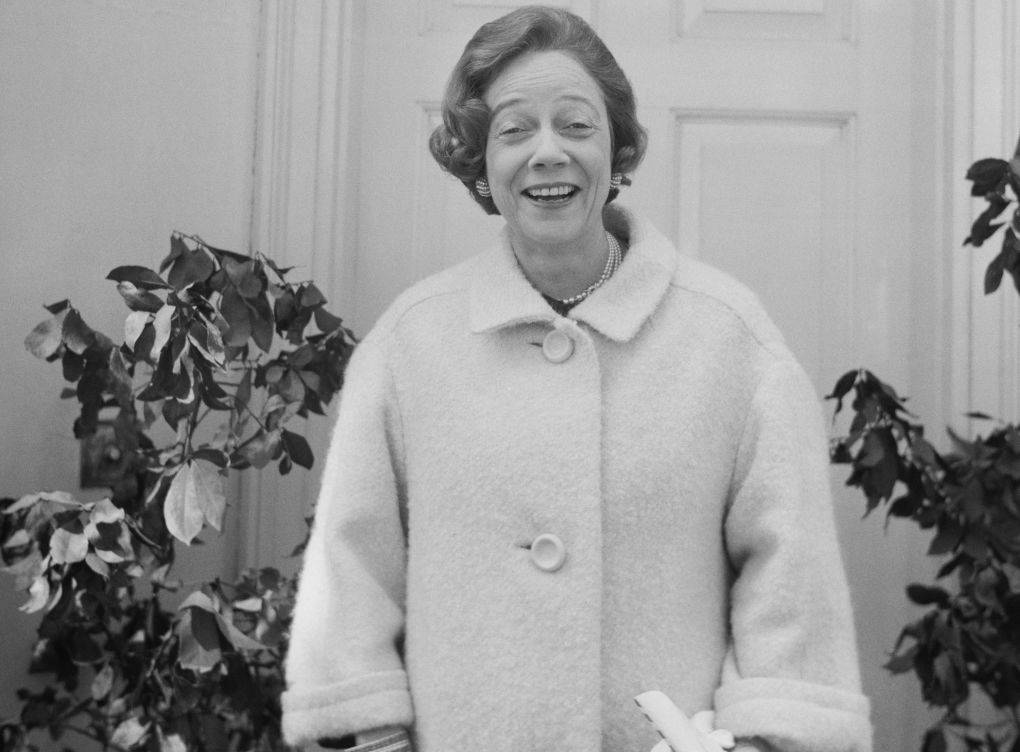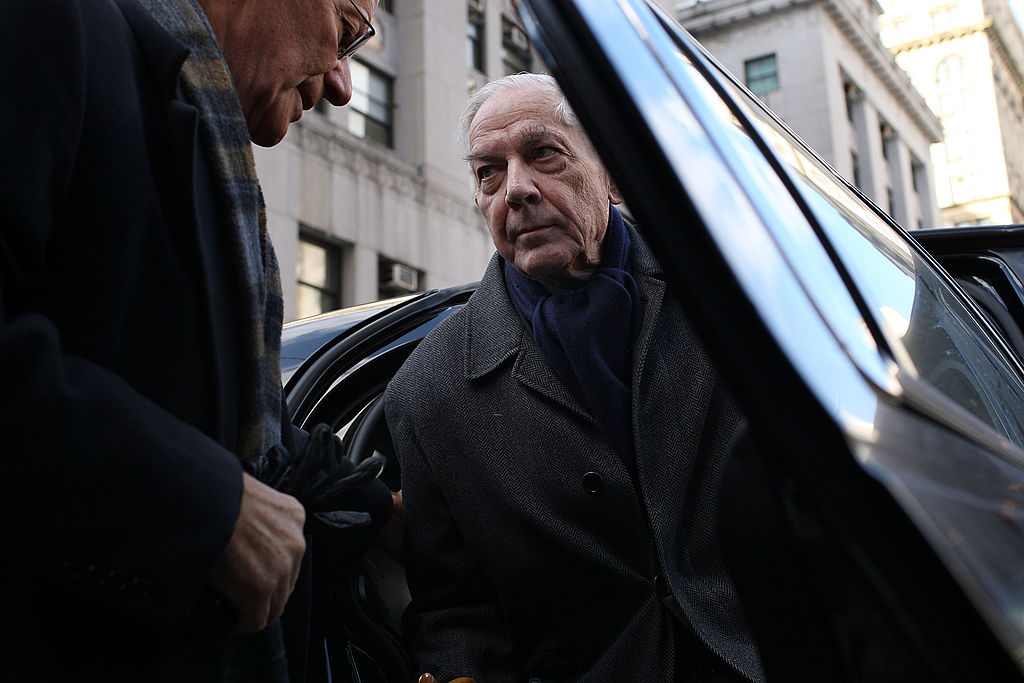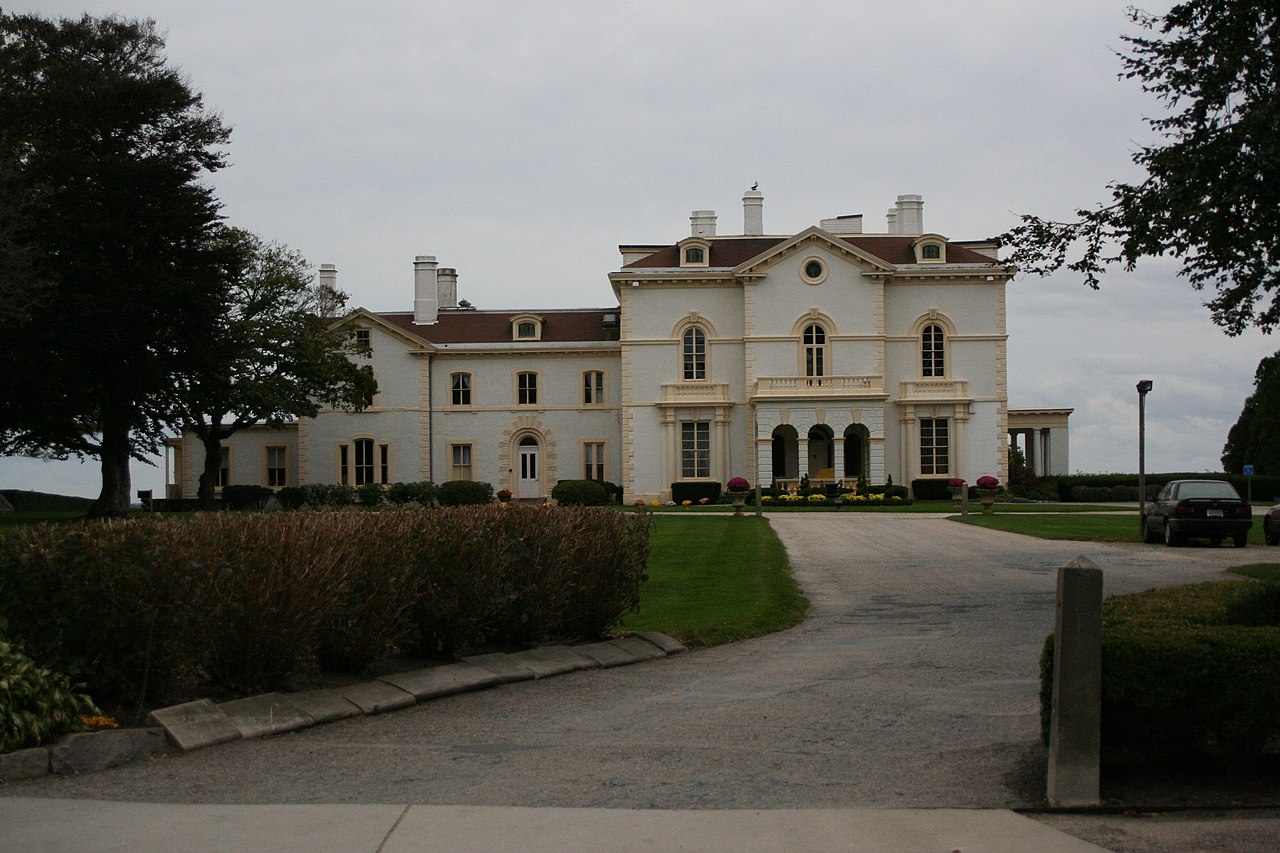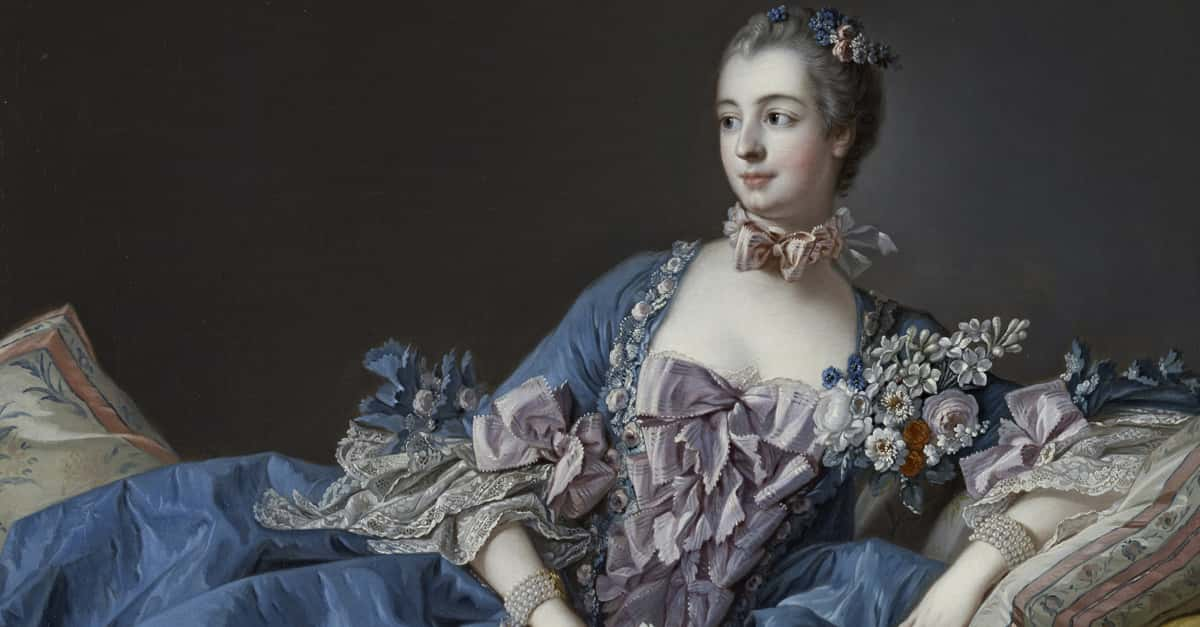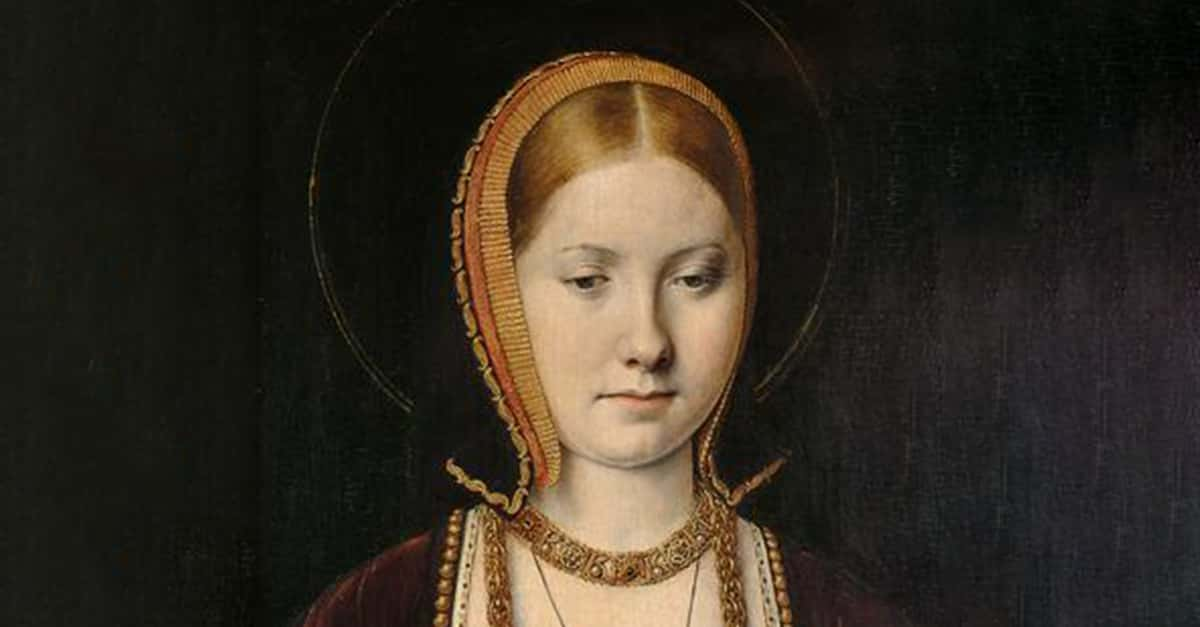The Rise And Fall Of The Astors
Despite tearing apart their wealth and social standing nearly a century ago, the name Astor is still familiar in Western culture. The Astors marked not just New York, but maps across the globe with their legacy. However, this family holds a dark and twisted past, full of feuds, secrets, and scandals. Let’s find out how The Astors became one of America’s richest families—and how they threw it all away.
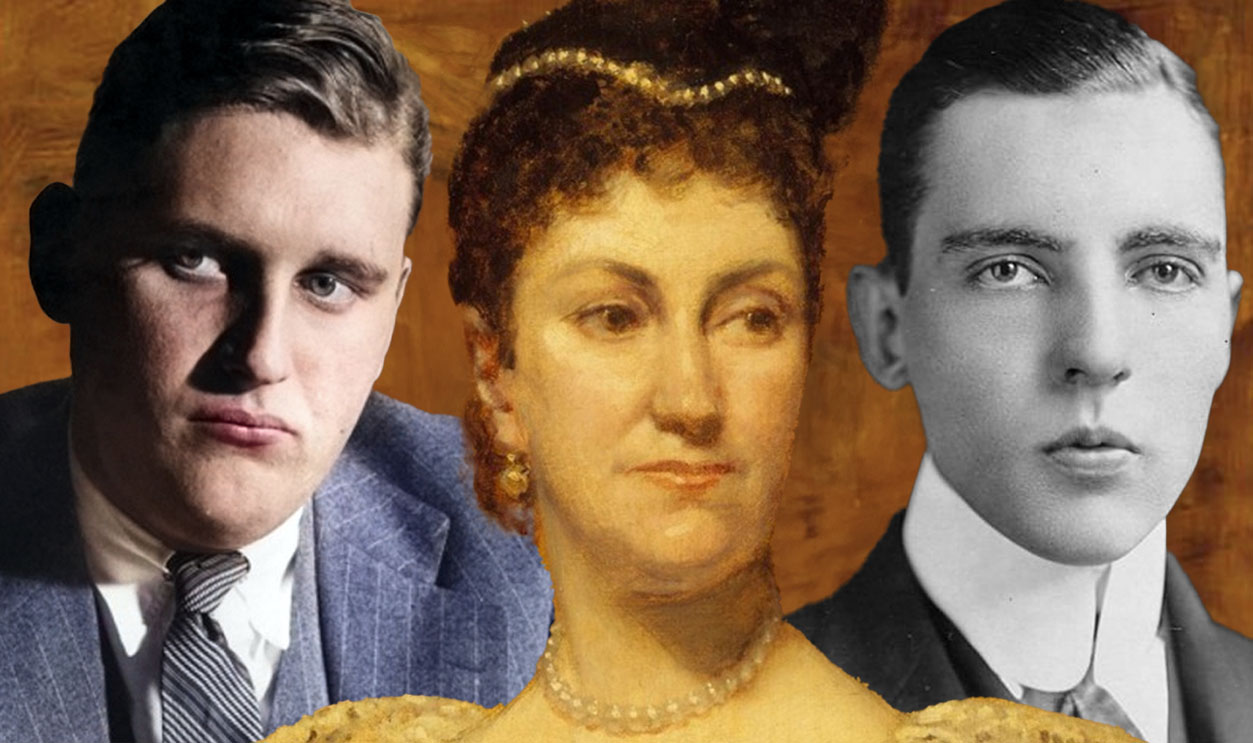
Factinate Video of the Day
1. The Were Enterprising
The Astor family was never one to stay still. Although John Jacob Astor was born in Germany, he moved to London when he was 16, where he joined his elder brother George. Together, they worked for a piano & flute manufacturer owned by an uncle. This would merely be a stopping ground on Astor’s journey to the top.
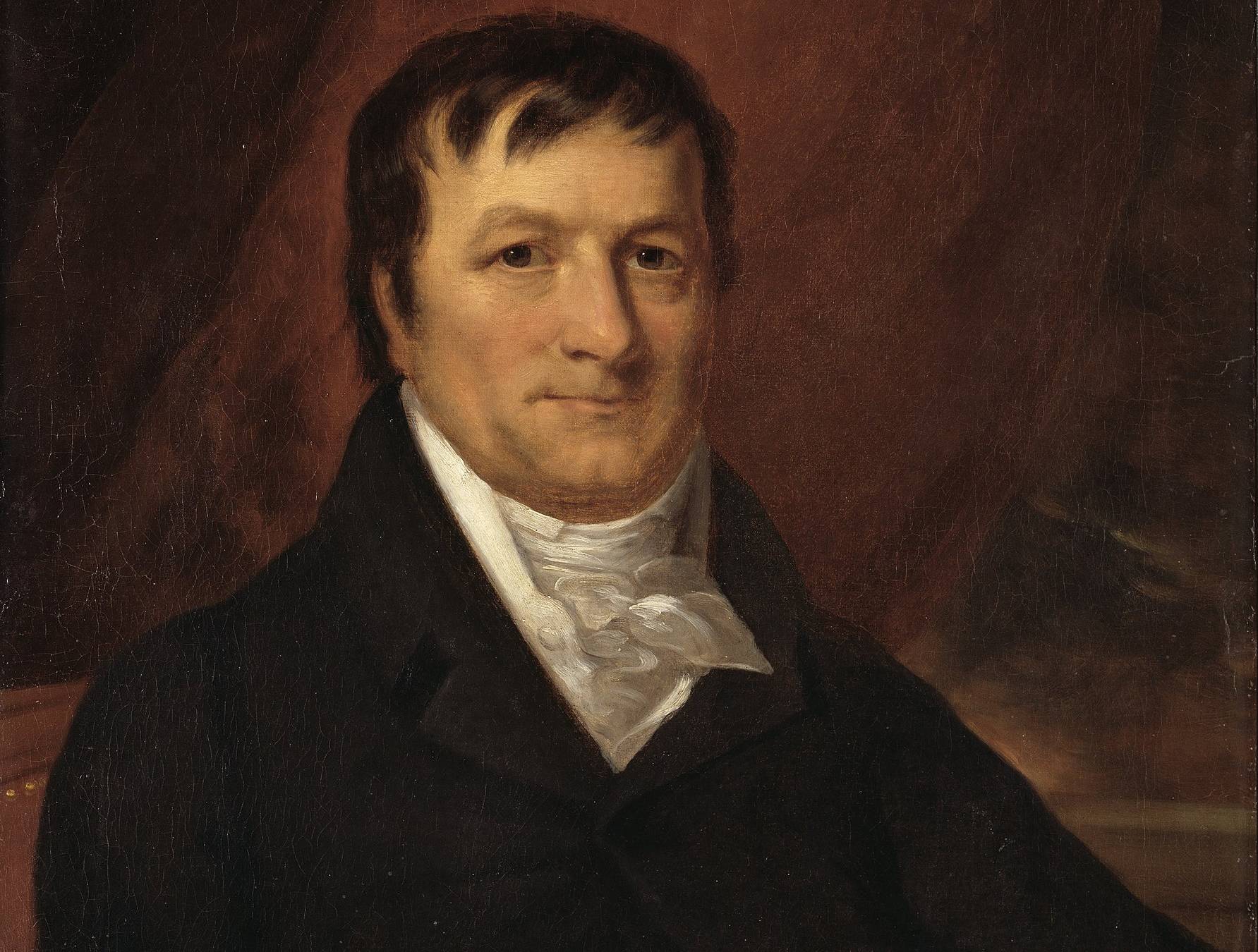 John Wesley Jarvis, Wikimedia Commons
John Wesley Jarvis, Wikimedia Commons
2. They Were Savvy
John Jacob Astor understood the importance of adapting to your surroundings. Originally christened Johann Jakob Astor, named after his father, he used his time in England to adapt. He learned English and anglicized his name to John Jacob. It would be this name that would been painted throughout history.
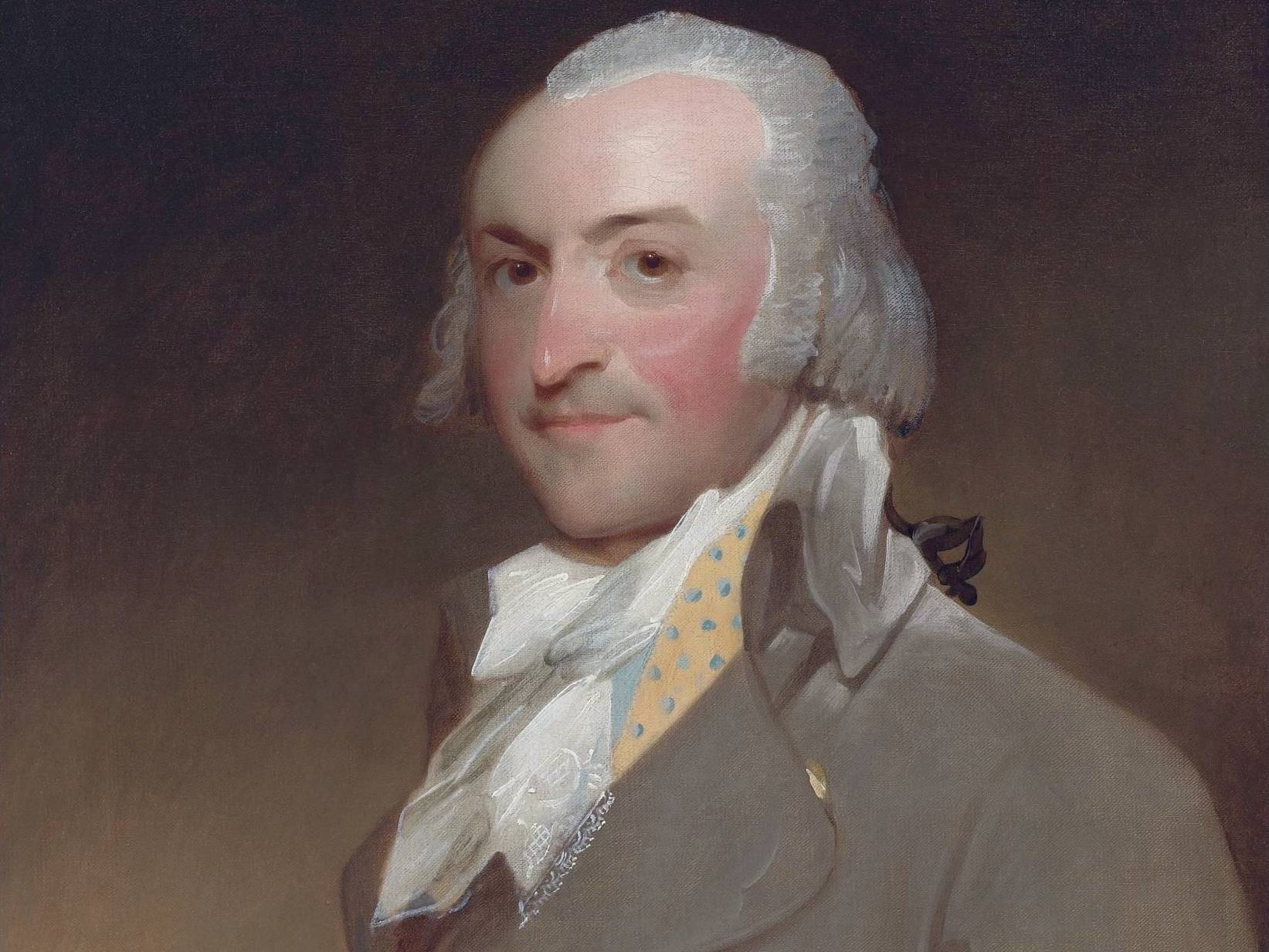 Gilbert Stuart, Wikimedia Commons
Gilbert Stuart, Wikimedia Commons
3. They Never Stayed Still
In November of 1783, America had just reached the end of a long battle for freedom with England, and Astor was 20 years old. He saw an opportunity in this new country and already had connections there. He left his brother George in England to go to his brother Henry in America. He was beginning his journey.
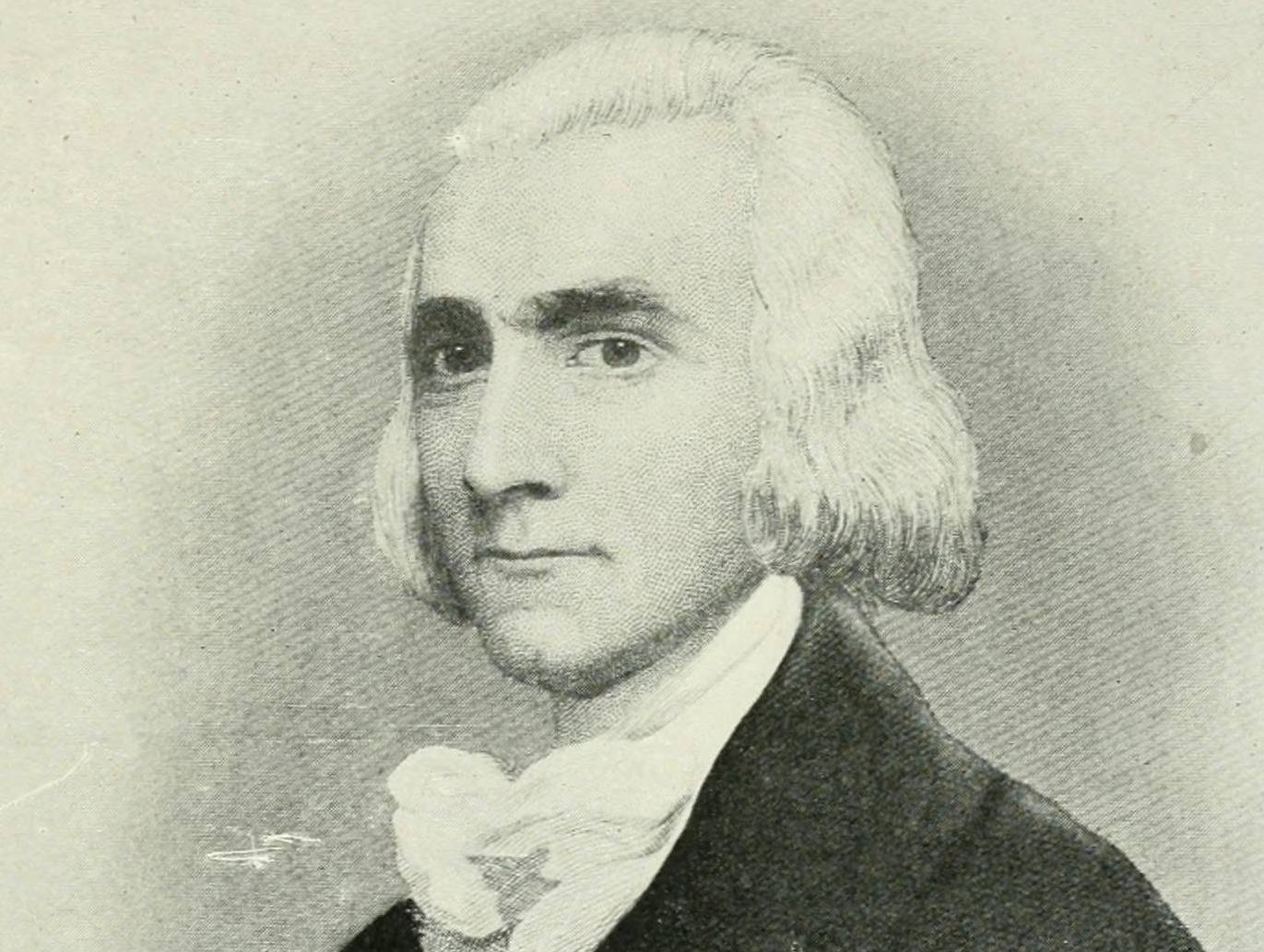 Internet Archive Book Images, Wikimedia Commons
Internet Archive Book Images, Wikimedia Commons
4. They Took Advantage Of Opportunities
The Astors made it to the top by never missing an opportunity. Henry worked in a butcher shop in New York City that he had already established, and when John boarded a ship for America, he had intended to join him in this business. Fate, however, had a different plan in mind for him.
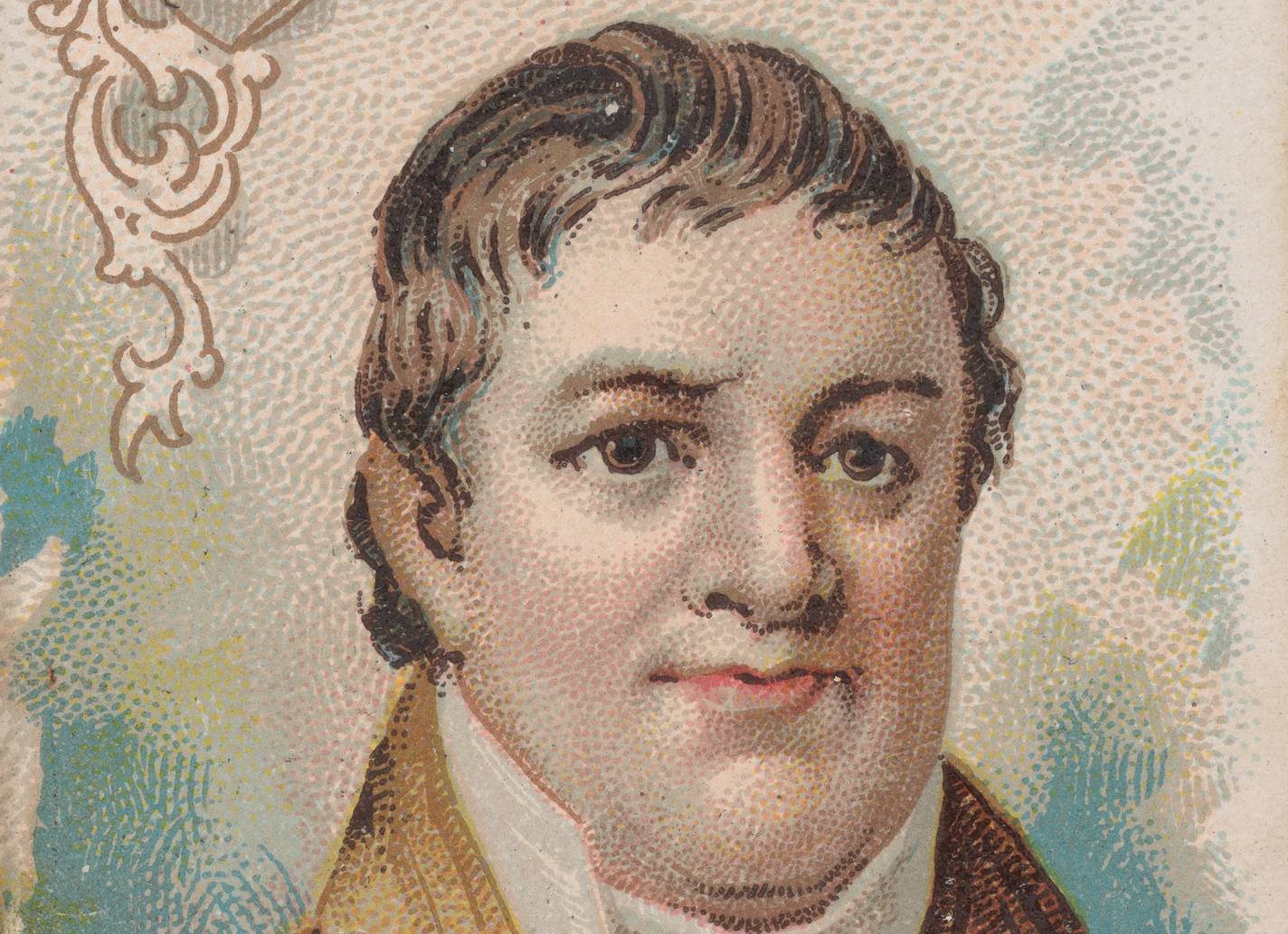 W. Duke, Sons & Co., Wikimedia Commons
W. Duke, Sons & Co., Wikimedia Commons
5. They Paid Attention
John Jacob Astor made his fortune by paying attention to what was going on around him. While onboard the boat that took him to America, Astor met a fur trader. Through his conversation with this man, an idea began to take seed within his mind. A simple conversation with a stranger changed the entire course of his life.
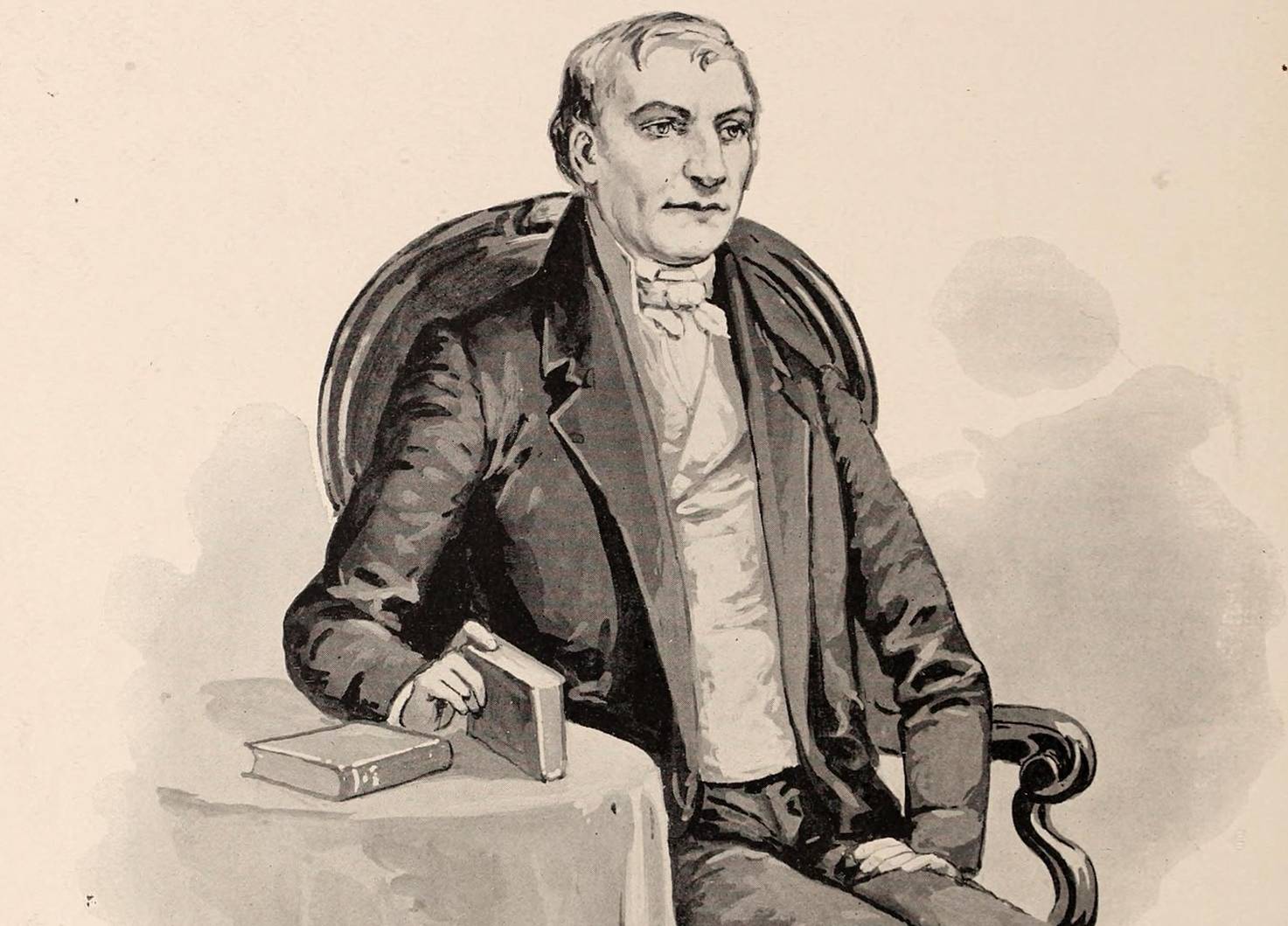 Sprague, John Franklin., Wikimedia Commons
Sprague, John Franklin., Wikimedia Commons
6. They Wore Many Hats
John Jacob Astor wore many hats throughout his life. When he arrived in New York, he did carry out his original plan to work with his brother in his butcher shop. He also worked as the New York agent of the same musical instrument business he had worked for in England. Yet the idea of the fur trade never left his mind.
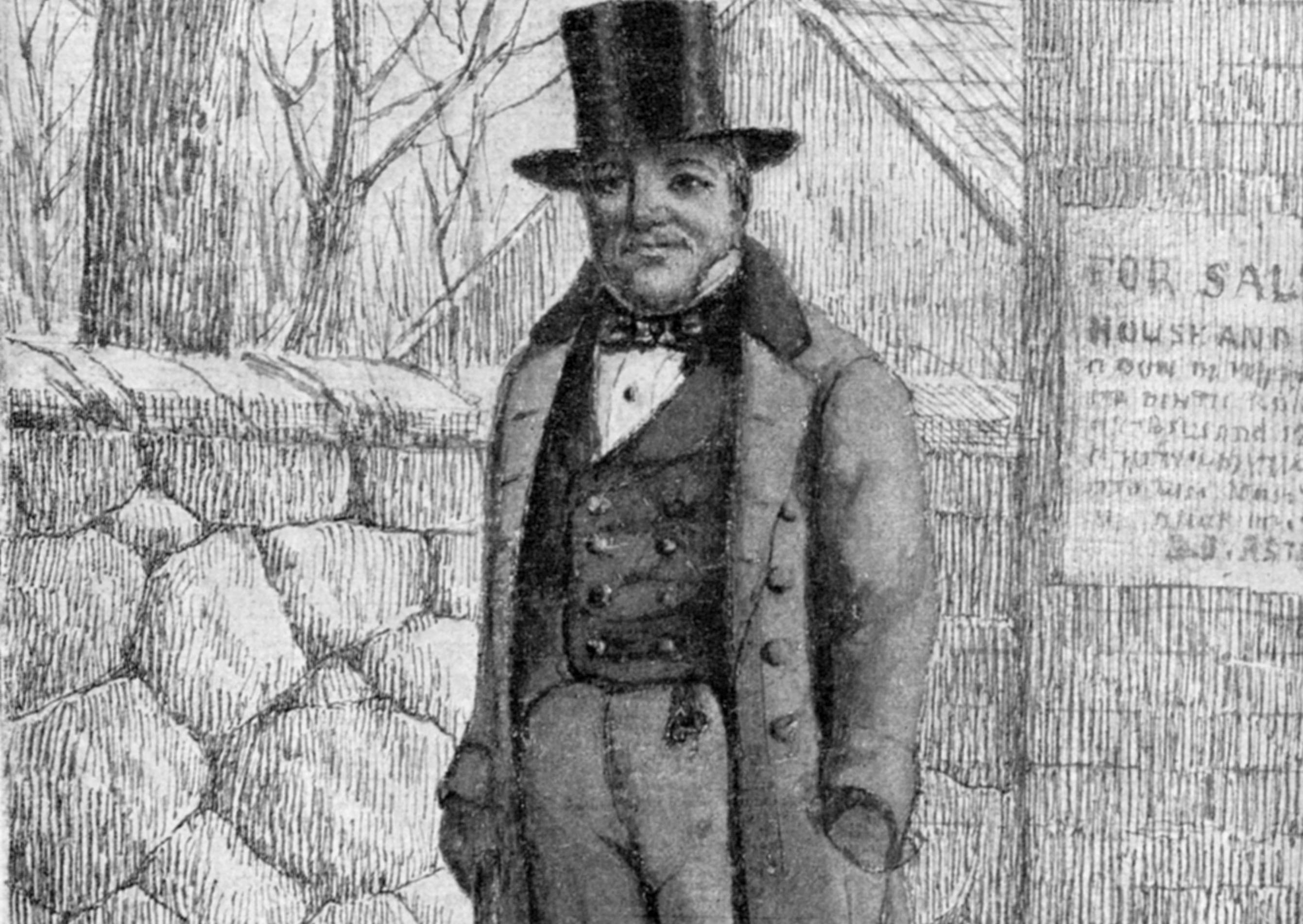 Interim Archives, Getty Images
Interim Archives, Getty Images
7. They Made Smart Business Moves
Astor opened his own fur goods shop in New York in the late 1780s, only a few years after arriving in the country. He began to purchase raw hides from Native Americans that he prepared himself and then resold to London for great profit. He was at the beginning of his success, and Astor knew it.
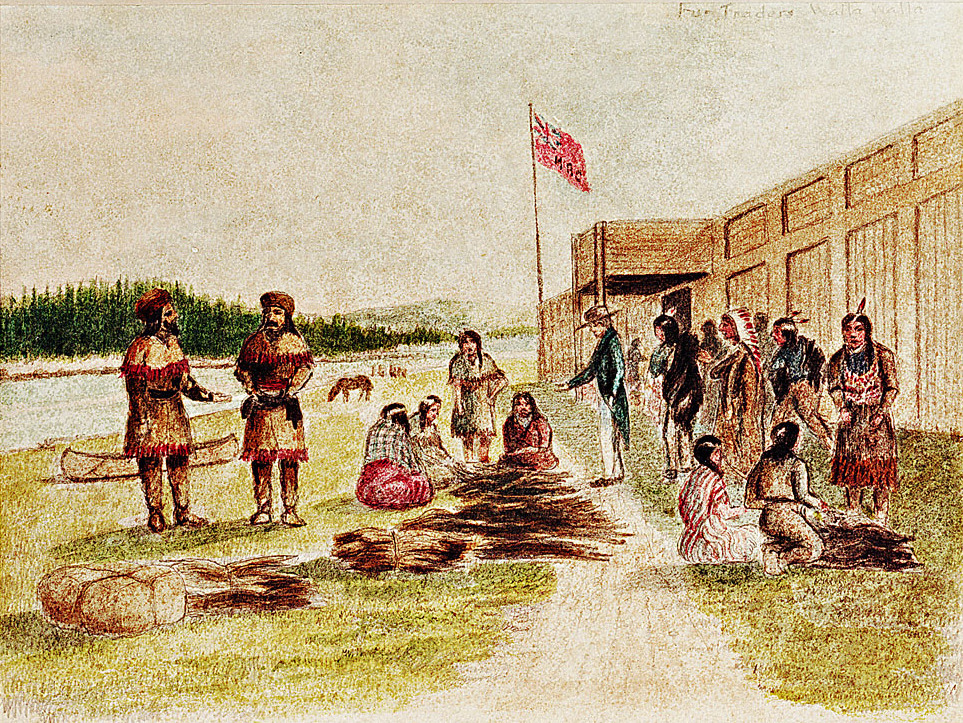 Joseph Drayton (1795-1856), Wikimedia Commons
Joseph Drayton (1795-1856), Wikimedia Commons
8. They Never Hesitated
The Astors knew that the true ticket to success was taking advantage of the opportunities that were around them. In 1794, the Jay Treaty opened up greater trading opportunities. Canada suddenly became an option. John Jacob Astor now had the opportunity to trade in a bigger market, and he did not hesitate to take it.
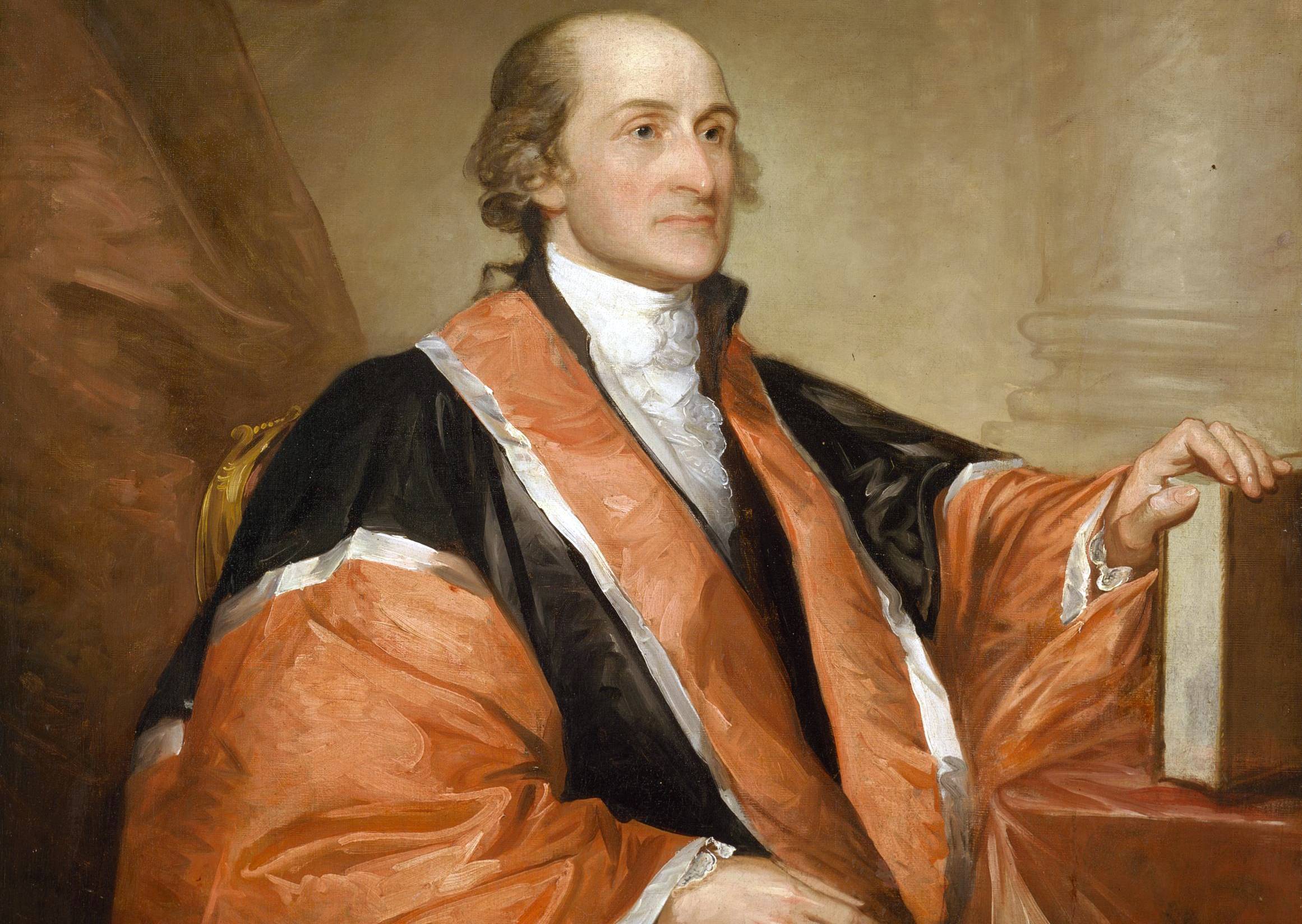 Gilbert Stuart, Wikimedia Commons
Gilbert Stuart, Wikimedia Commons

History's most fascinating stories and darkest secrets, delivered to your inbox daily.
9. They Used Their Connections
Using his connections in London, Astor immediately drew up a contract with the North West Company, which at the time rivaled the Hudson’s Bay Company for trade interests in the Montreal area. By 1800, a mere 20 years after starting, Astor had earned the modern equivalent of $229 million, and there was a reason for this—he was ruthless.
 Jonathunder, CC BY-SA 3.0, Wikimedia Commons
Jonathunder, CC BY-SA 3.0, Wikimedia Commons
10. They Didn’t Play Nice
The Astors didn’t become one of America’s richest families by playing nice. John Jacob Astor was a smart man. He saw the profit he could make from beaver fur, getting mark-ups that ranged from 600-800% over the initial price, and he didn’t hesitate to ask for it, regardless of who suffered along the way.
11. They Trampled Others Along The Way
John Jacob Astor did not care for anyone that was working for him. He was looking for his profit and demanded high prices from his traders. In turn, Astor used this to incentivize them to pass along this expense to the Indigenous populations that they would trade pelts with. Among other things, the traders used alcohol to get the better of the Indigenous people they traded with. But these would not be the last people the Astors trampled on their way to the top.
12. They Weren’t Afraid Of Adversity
John Jacob Astor was not afraid of adversity. Although he’d already amassed huge amounts of money, there were threats on the horizon. The government designed the US Embargo Act of 1807 to limit external trade and closed off the lucrative Canadian fur trade Astor had gotten comfortable with. It looked like Astor’s rise in wealth was finally reaching its downward fall.
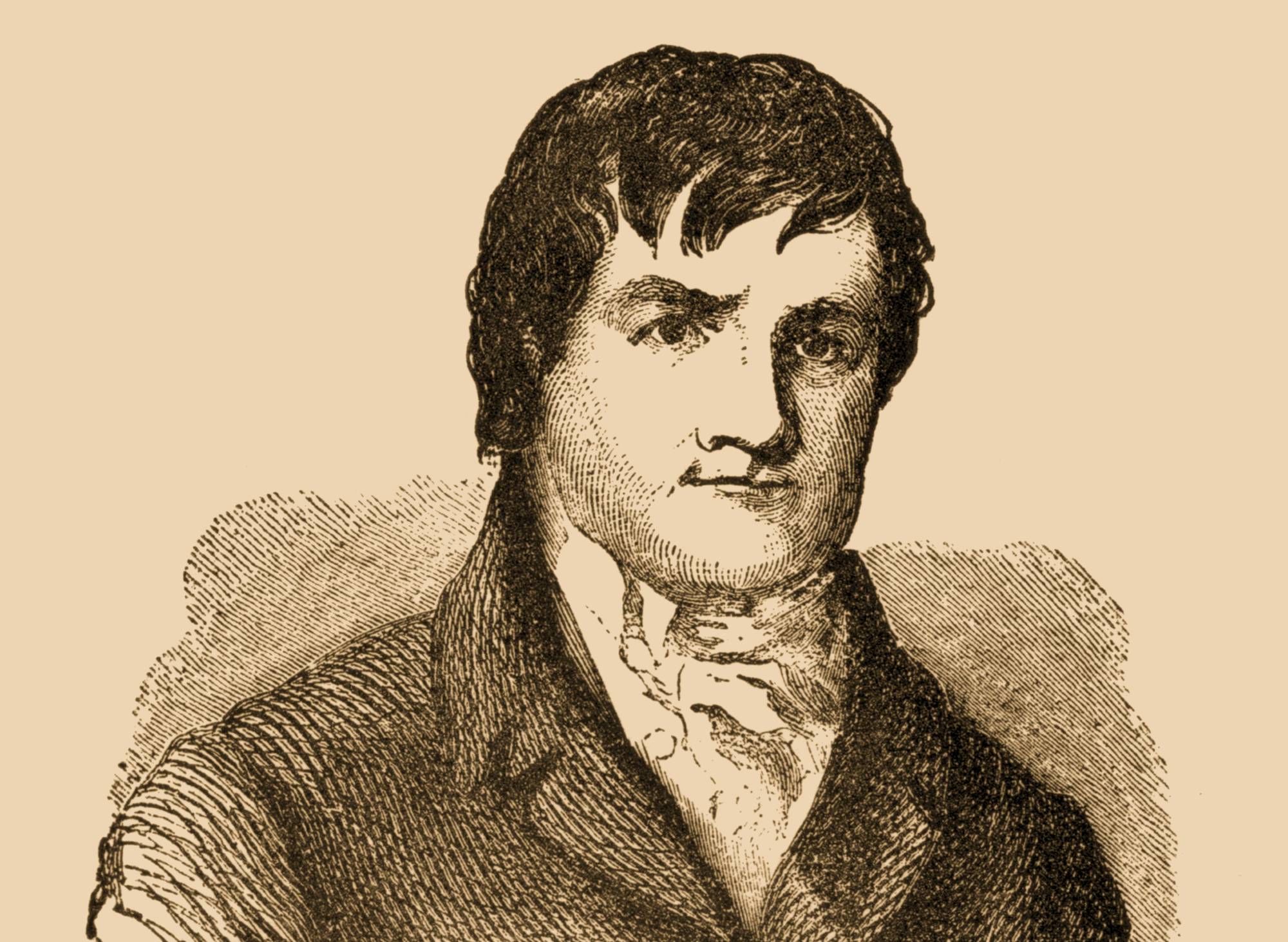 Interim Archives, Getty Images
Interim Archives, Getty Images
13. They Turned Obstacles Into Opportunities
Astor turned his obstacles into new opportunities. Instead of letting the Embargo Act get in his way, he got the approval of President Jefferson to establish his own company: the American Fur Company. This began Astor’s control over the fur trade in not just the Great Lakes area, but the Columbia River region as well.
 Rembrandt Peale, Wikimedia Commons
Rembrandt Peale, Wikimedia Commons
14. They Created New Businesses
Astor created the Pacific Fur Company, a subsidiary of the American Fur Company, and sent them west towards the Pacific coast. One party was sent by water and another, which became known as the Astor Expedition, was sent by land. These traveling parties would change the face of America forever.
15. They Forged West
It was through Astor’s funding that America was able to push west towards the Pacific coast. Astor’s expedition settled at the mouth of the Columbia River where they built Fort Astoria, the first American community on the Pacific Coast. They were on their way home when they discovered something incredible.
 Gabriel Franchère, Wikimedia Commons
Gabriel Franchère, Wikimedia Commons
16. They Changed America Forever
Astor’s land contingent was returning home from Astoria following the same path they’d taken there when they encountered trouble. Attempting to avoid conflict with Crowe warriors in the north, they headed south—where they discovered the famed South Pass. This opened the West to later settlers.
 Captin Sir Edward Belcher, Wikimedia Commons
Captin Sir Edward Belcher, Wikimedia Commons
17. They Diversified Their Portfolio
Astor got ahead in business by never isolating himself to one product. When the War of 1812 stalled his fur trade, he turned his attention to something more dangerous: opium. The opium smuggling trade was running rampant at this time. Astor decided to try his hand at it.
 Amédée Forestier, Wikimedia Commons
Amédée Forestier, Wikimedia Commons
18. They Broke The Law
In 1916, the American Fur Company purchased 10 tons of Ottoman-produced opium. He shipped this contraband to Canton, China on board one of his ships. Although Astor continued the opium trade, he proceeded to trade exclusively in Britain following this. He had his eye on bigger investments.
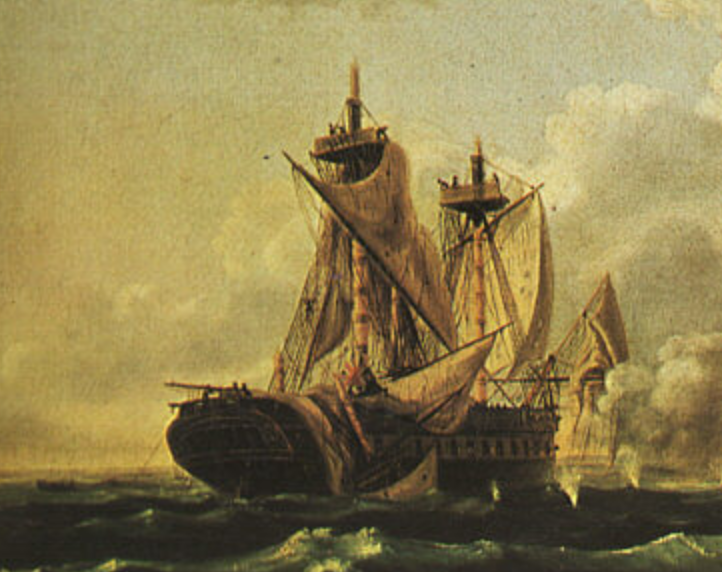 Thomas Birch, Wikimedia Commons
Thomas Birch, Wikimedia Commons
19. They Didn’t Wait
During his rise in the fur trade, Astor was not sitting idly with his money. Instead, he was using his newfound wealth to invest in something that he intended to turn him a profit. New York City real estate became Astor’s true passion.
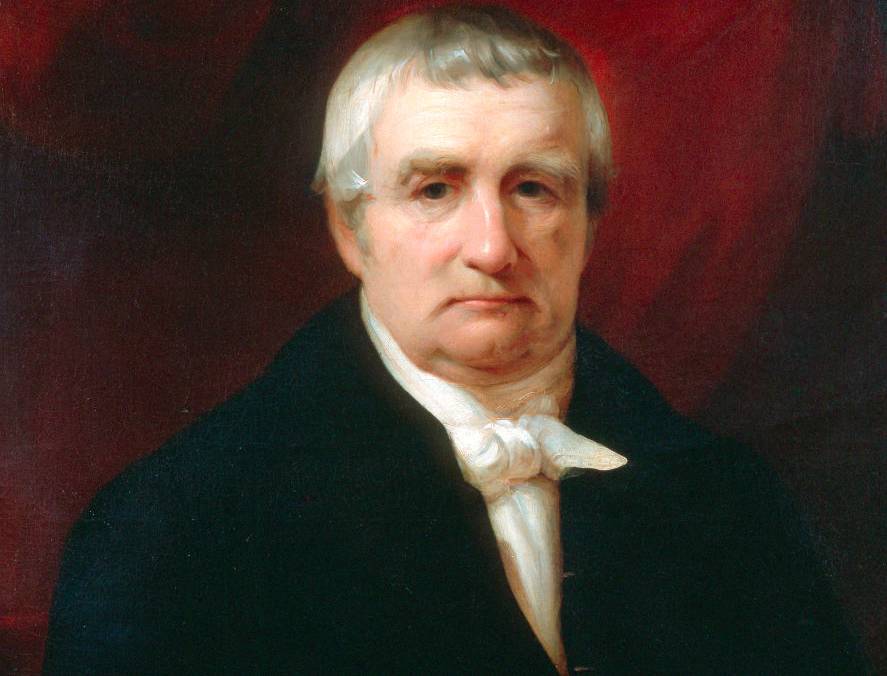 Interim Archives, Getty Images
Interim Archives, Getty Images
20. They Made Savvy Investments
The Astor family made their fortune through savvy investments. John Jacob Astor bought his first chunk of land in New York in 1799. As he expanded into the 19th century, he became more strategic about it, buying land along the Hudson River. He eventually sold his fur business to focus on real estate. He knew when to make a good purchase.
 Unknown Author, Wikimedia Commons
Unknown Author, Wikimedia Commons
21. They Predicted Correctly
Astor did not invest in just any land. He invested his money in land that would give him the most profit and prestige. One of his biggest purchases included a 70-acre farmland in the heart of Manhattan that would one day become Times Square. It was this land that his descendants would continue to profit upon.
 Paul Mannix, CC BY 2.0, Wikimedia Commons
Paul Mannix, CC BY 2.0, Wikimedia Commons
22. They Made A Legacy
Although Astor had five surviving children, he only had two sons. His eldest son was sickly and considered mentally unstable. Therefore, it was his second son, William Backhouse Astor, who would inherit and carry on the mantle of the Astors.
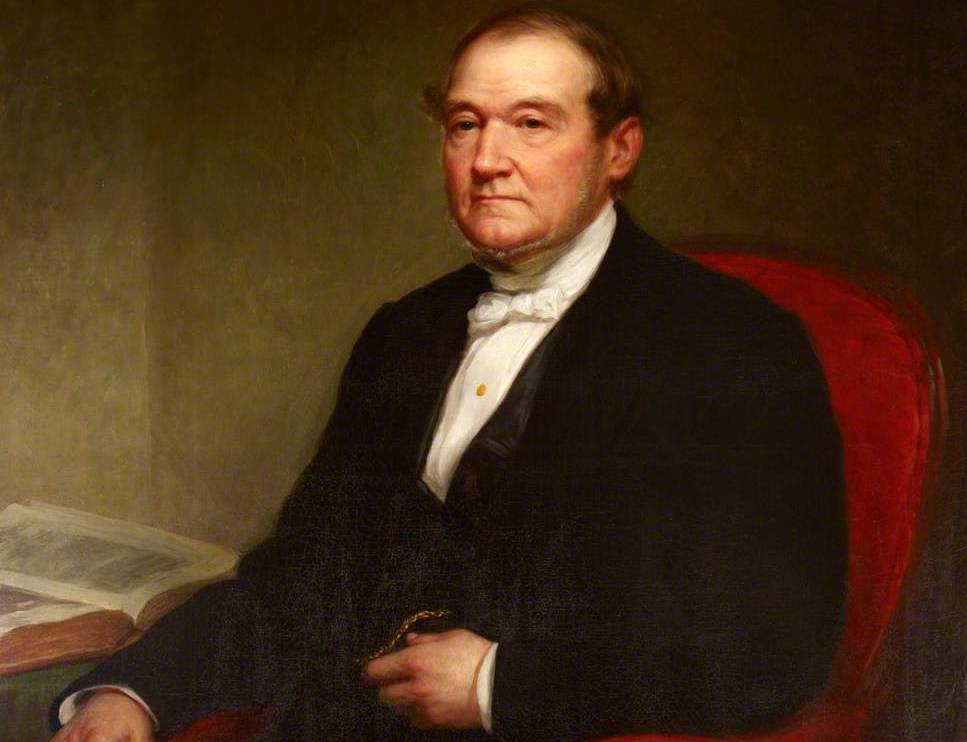 George Augustus Baker, Wikimedia Commons
George Augustus Baker, Wikimedia Commons
23. They Taught Their Son
William Backhouse Astor attended University in Germany before returning to America to partner with his father. There is disagreement among sources about whether William played a large role in the business while his father was alive. However, his power as his father’s sole heir was undeniable—even before his own wealth was added.
 H. Chr. Grape, Wikimedia Commons
H. Chr. Grape, Wikimedia Commons
24. They Were Industrial
The entire Astor family was industrial. John’s brother Henry had also continued to make a name for himself. At the time of his passing, Henry Astor’s estate was worth the equivalent of $507 million in today’s currency. Having no children, Henry left his estate to his brother’s son: William Backhouse Astor. William became independently wealthy overnight—and he hadn’t even inherited his father’s wealth yet.
25. They Were The Richest Of The Rich
At the time of his passing, John Jacob Astor was the richest man in the United States. In modern terms, his entire estate was worth the equivalent of $598 million. Although he left some small bequeathments to other organizations, the bulk of this came to William, adding to what he’d inherited from his uncle. William didn’t sit idly with his money.
26. The Grew Their Wealth
The Astor wealth continued to grow under William’s guidance. William Backhouse Astor followed in his father’s footsteps, continuing to take the family’s wealth and invest in New York real estate, with a particular focus on land below Central Park. Like his father, William was ruthless in his investments.
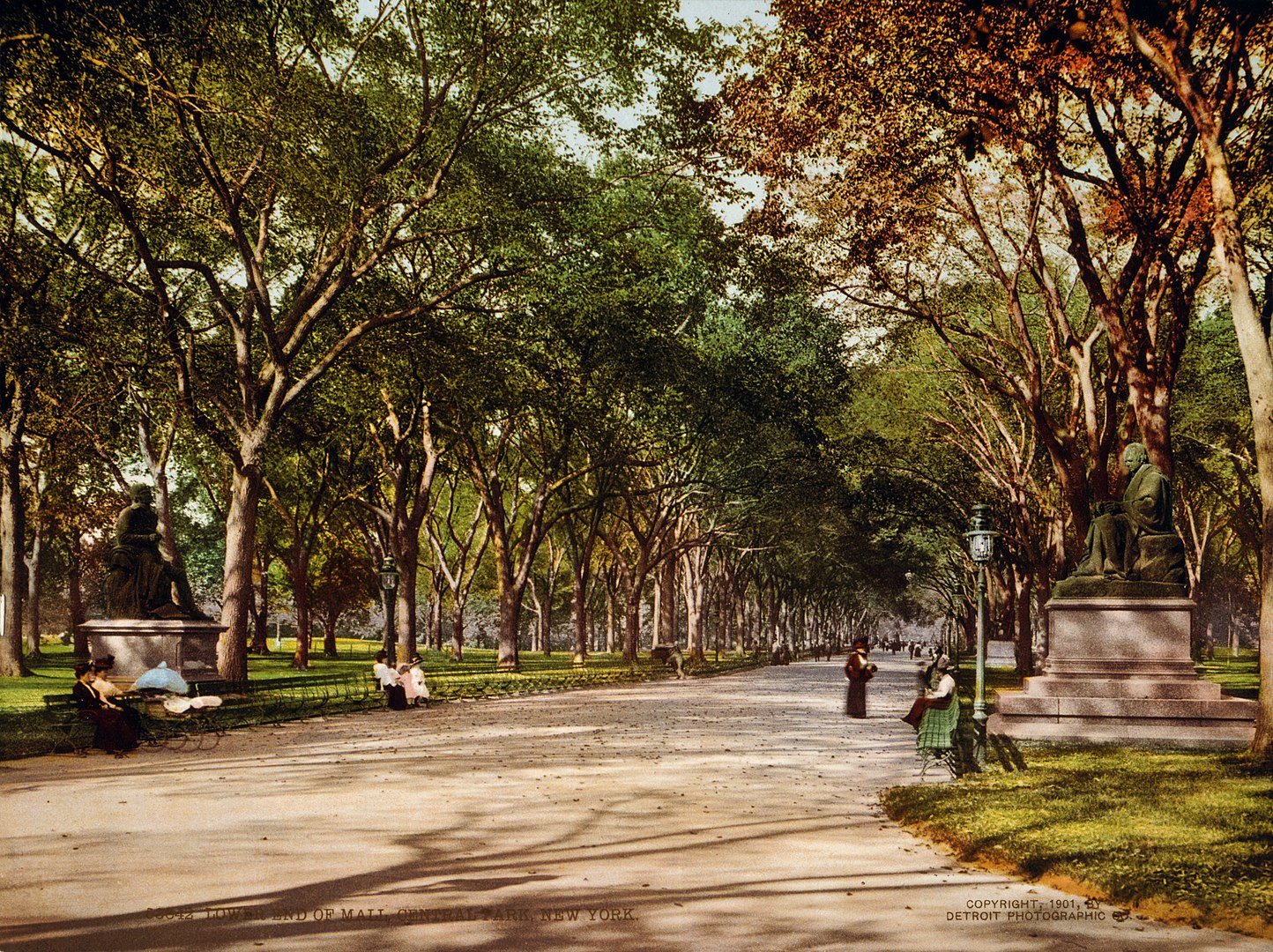 …trialsanderrors, CC BY 2.0, Wikimedia Commons
…trialsanderrors, CC BY 2.0, Wikimedia Commons
27. They Profited Off Others
The Astors profited off their land not by building on it, but by renting it out to sub-landlords. They would give sub-landlords leases for 20 years and leave them to build whatever they pleased on that land. As long as the Astors got their money, they did not care what happened on these lands.
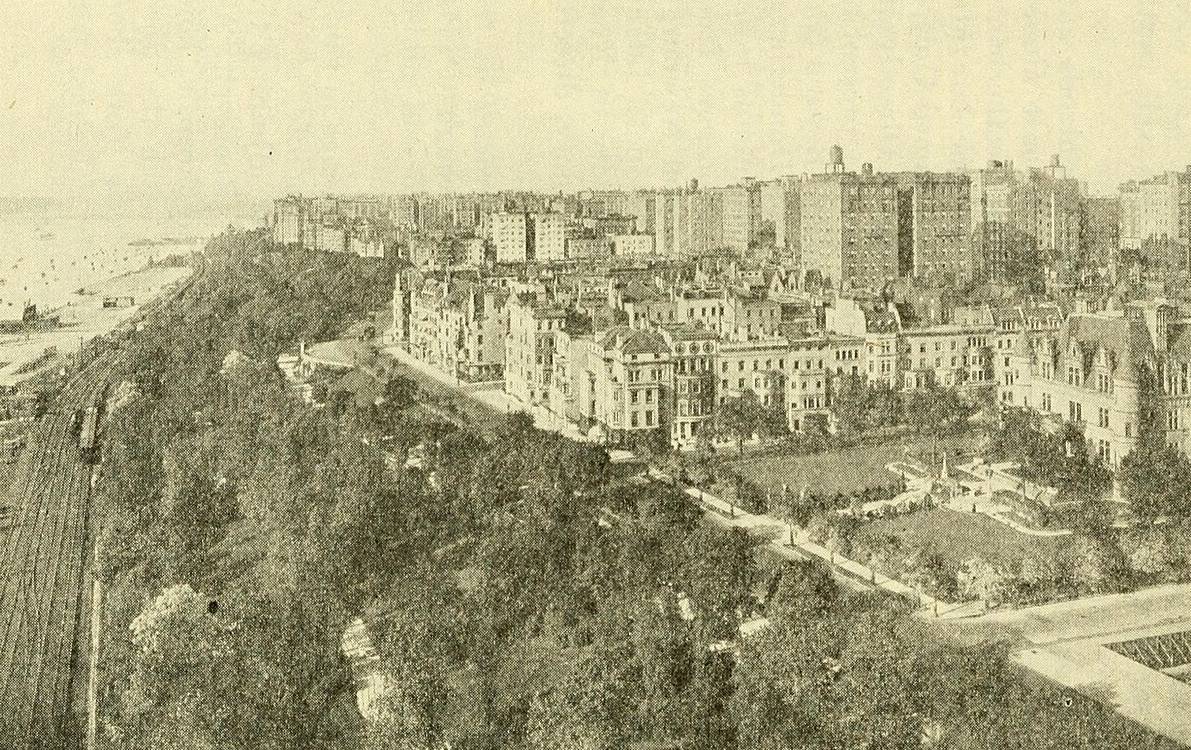 Internet Archive Book Images, Wikimedia Commons
Internet Archive Book Images, Wikimedia Commons
28. They Prioritized Money Over Quality
There was no quality control on what was built upon the Astors’ lands. Due to the nature of the lease, anything built on the land would revert to the Astor family in 20 years or so. There was no incentive for building upkeep, so sub-landlords didn’t do it. The Astors were, without a doubt, slumlords. Still, the family rose.
29. They Married Well
As with any good family, the Astors knew when and how to marry well. William married his second son, William Backhouse Astor Jr, to society bell Caroline Schermerhorn. The Schermerhorn family was one of the oldest in New York, so this union gave the Astors much-needed social clout—it also changed the shape of the family forever.
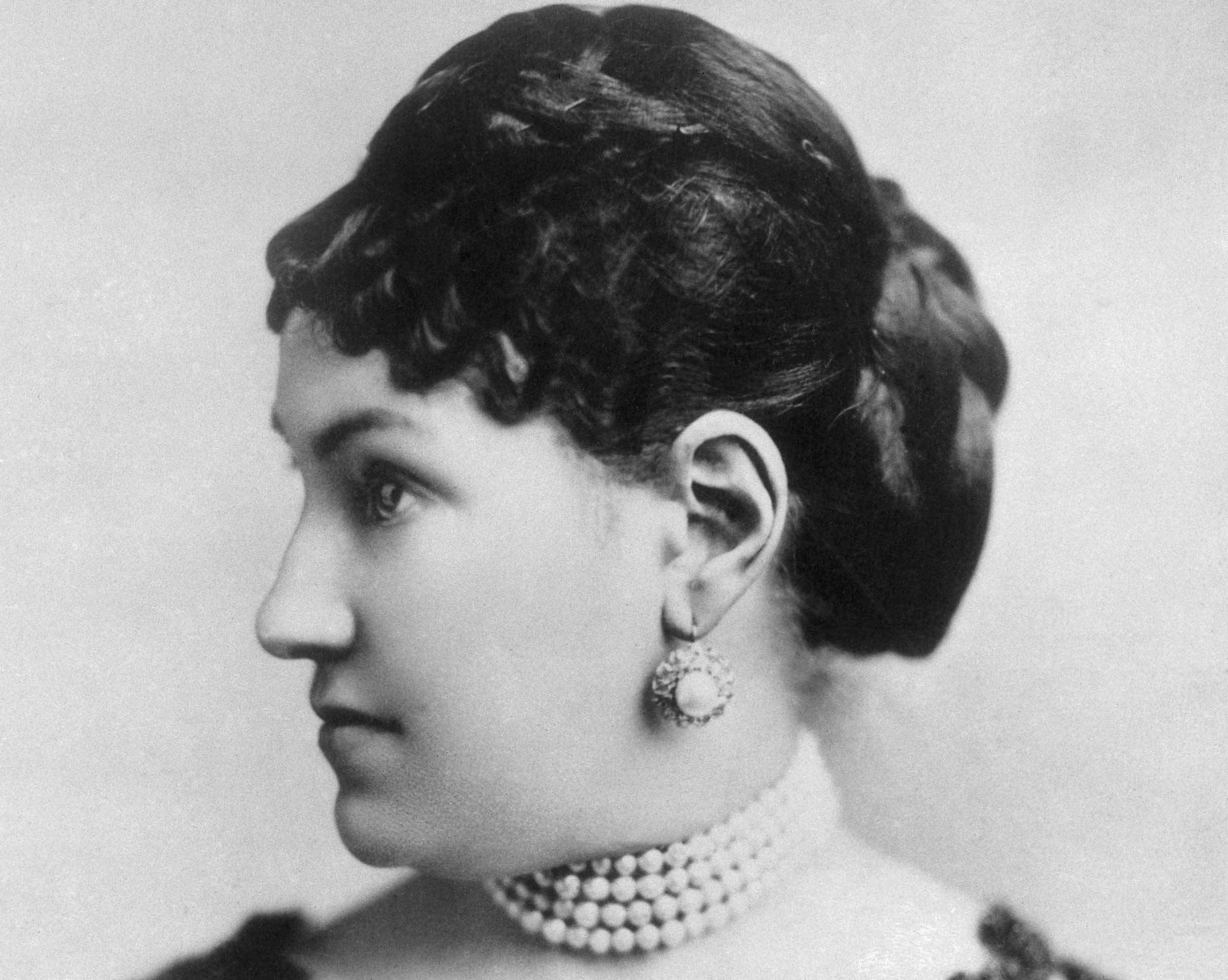 Unknown Author, Wikimedia Commons
Unknown Author, Wikimedia Commons
30. They Rose To The Top
Caroline Astor was a social powerhouse, and she knew it. Despite being raised with all the best manners of high society, there was nothing that “Lina” Astor enjoyed more than lording her status over everyone—including her husband.
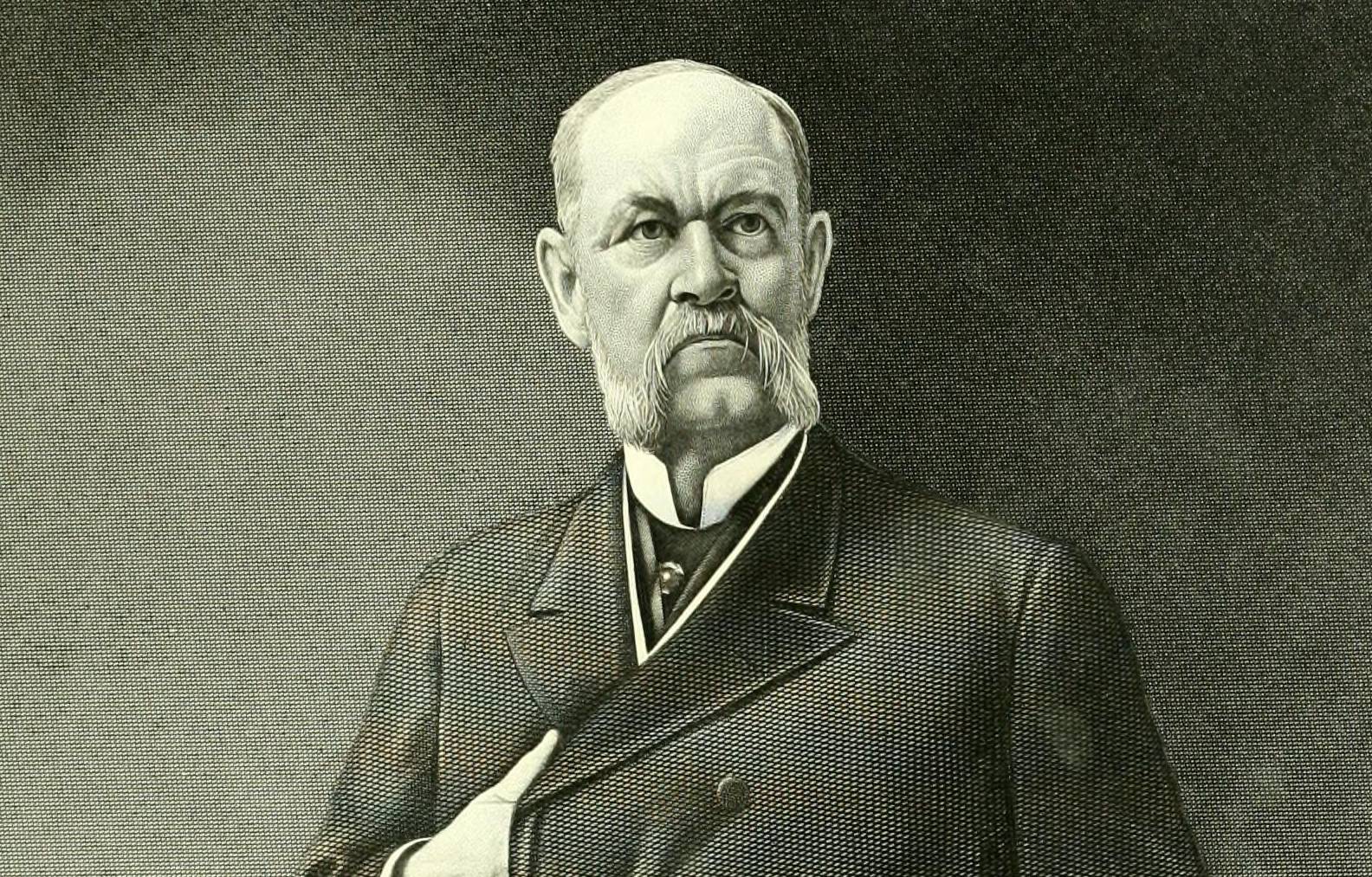 Unknown Author, Wikimedia Commons
Unknown Author, Wikimedia Commons
31. They Emphasized Connections
Due to her family’s pedigree, Caroline was the one who married down. She and William’s marriage was fraught with tension. Caroline enjoyed reminding her husband who held the social power in their relationship, and William was an indifferent husband, preferring seemingly anything to spending time with his wife. So, Caroline amused herself at others expense.
32. They Were The Center Of Society
Caroline Astor filled the void created in her marriage by currying social power and attention from her peers. She frequently hosted lavish balls and events, taking great enjoyment in excluding those that did not meet her standards. Caroline took her role as the meanest of the mean girls to the extreme.
 Unknown Author, Wikimedia Commons
Unknown Author, Wikimedia Commons
33. They Were Exclusive To The Extreme
Along with her partner-in-crime, Ward McAllister, Caroline Astor made an index of “The Four Hundred”. This exclusive list was the 400 people that Caroline and McAllister believed to be the best of New York Society. However, for all her clout, Caroline still fell short of the one thing she wanted most.
34. They Had Rifts
It wasn’t just her husband that Caroline Astor didn’t get along with. The truth was, Caroline was generally disliked by the entire Astor clan. There was an extra layer of animosity between Caroline, her husband’s older brother John Jacob Astor III, and his wife Charlotte Augusta Gibbes. And her sister-in-law was in Caroline’s way.
 Thomas Sully, Wikimedia Commons
Thomas Sully, Wikimedia Commons
35. They Obeyed Etiquette
The etiquette norms of the time were a law to be followed. If you wished to keep your good standing, then you obeyed them. They trapped Caroline Astor. As the wife of the younger Mr Astor, she did not have a claim on the title that she truly wanted: being the Mrs Astor. Caroline wouldn’t put up with this for long.
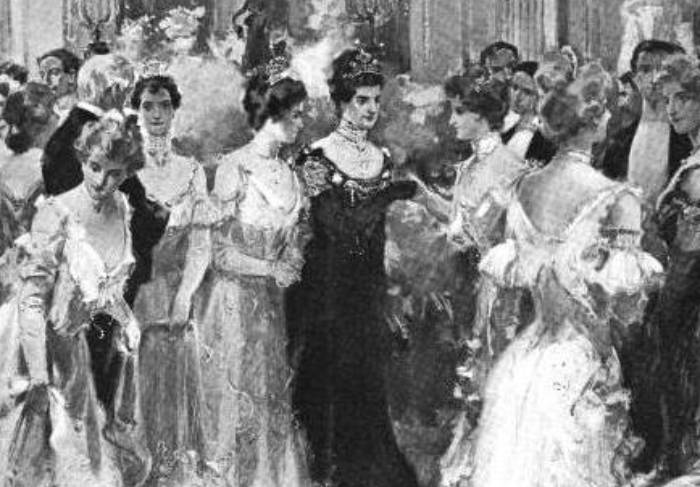 Unknown Author, Wikimedia Commons
Unknown Author, Wikimedia Commons
36. They Got What They Wished
Suddenly, in 1887, Caroline got everything that she had wished for. Her sister-in-law passed suddenly, and the title that she coveted for so long was finally up for grabs. Caroline was going to make the title “Mrs Astor” hers. Except, her years of cold relationships with her in-laws meant they weren’t going to give her title so easily.
 Carolus-Duran, Wikimedia Commons
Carolus-Duran, Wikimedia Commons
37. They Were Tearing Apart
Charlotte and John’s son, William Waldorf, was perfectly aware of how much his mother disliked Caroline, and he wasn’t ready to simply give her the pleasure of the title his mother had guarded for so many years. He wanted to give the title to his own wife, Mamie. The Astor family was beginning to rip itself apart.
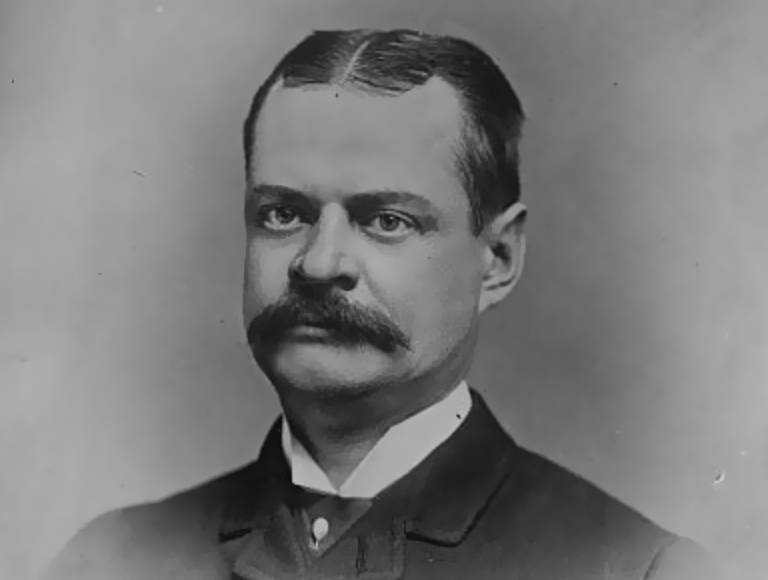 Bain News Service, Wikimedia Commons
Bain News Service, Wikimedia Commons
38. They Were Ruthless
Caroline Astor was as ruthless as her in-laws before her. Although the families feuded over the matter for a few months, Caroline carried away the title before William and Mamie had truly gotten their battle plan together. Caroline was finally the Mrs Astor, but William continued the fight.
39. They Didn’t Back Down
Astors don’t back down from a fight and William was no different. Caroline found herself, one morning, waking in her home to an unseemly sight. No longer did she see the former house of her brother-in-law John Jacob Astor III next door, but rather a construction site. This was just the start of William’s plan.
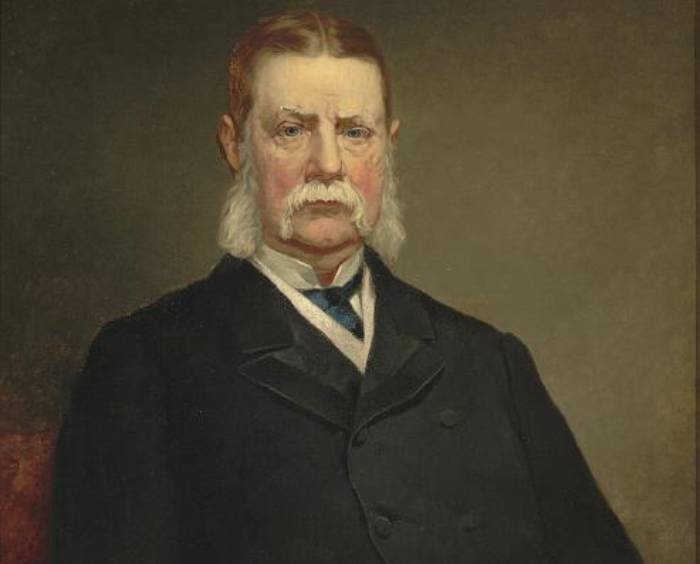 Jacob Hart Lazarus, Wikimedia Commons
Jacob Hart Lazarus, Wikimedia Commons
40. They Got Revenge
William’s plan was as conniving as any Astor could hope to aspire to. In the place of his father’s former mansion, he built a towering hotel, The Waldorf. Not only did this building dwarf Caroline’s mansion next door, but it slighted Caroline where it hurt—her status. Respectable society did not visit hotels. Caroline went to battle.
41. They Finished Fights
The Astors did not lose, certainly not Caroline Astor. She and her son, John “Jack” Jacob Astor IV, conspired to retaliate against their relatives. In the end, they settled on a simple plan: outdo them at their own game. They built their own hotel, The Astoria. Not only was The Astoria larger than The Waldorf, but it emphasized who had the right to The Astor name. William started the games, but Caroline finished them.
 The Bellevue-Stratford Hotel, Philadelphia, PA, Wikimedia Commons
The Bellevue-Stratford Hotel, Philadelphia, PA, Wikimedia Commons
42. They Created Landmarks
In an ironic twist of fate, The Waldorf and The Astoria would eventually merge into the now-famous Waldorf-Astoria hotel. The Astor family, however, can’t say the same. Caroline’s final move in their feud was so well executed that it eventually chased William Waldorf right to England. Bigger problems, however, were coming for The Astors—right from Caroline’s blood.
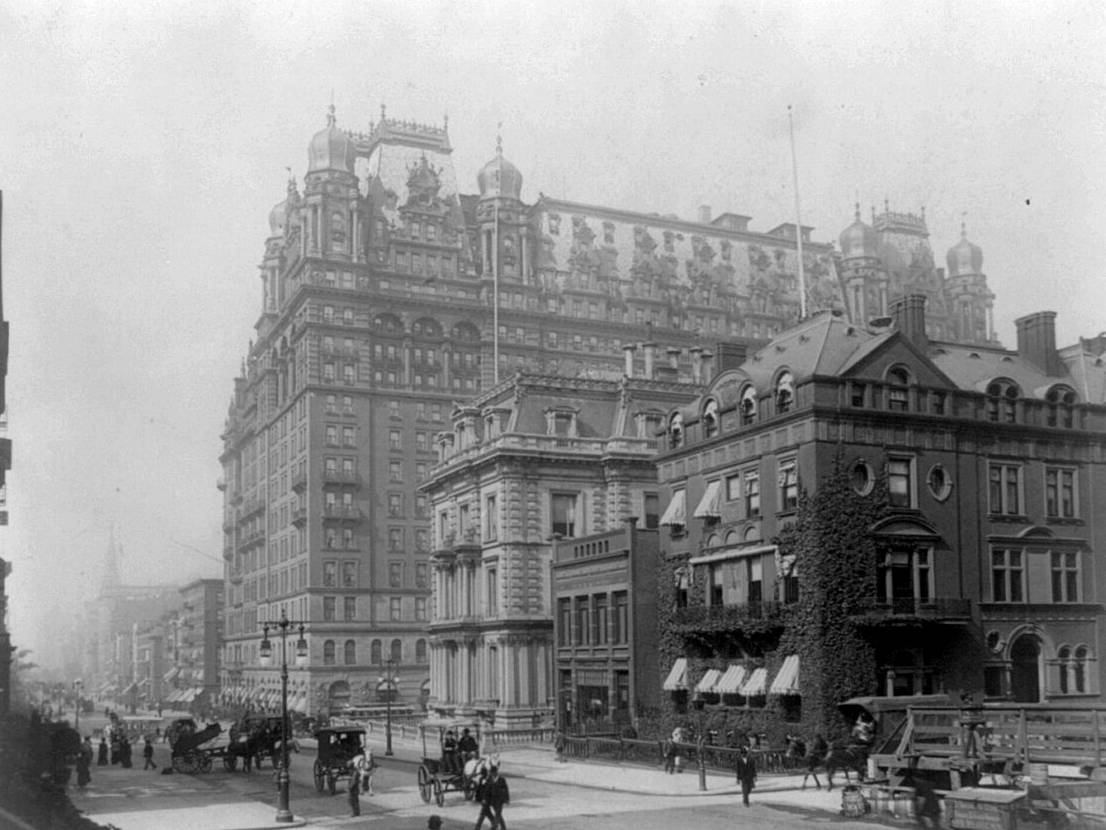 Library of Congress, Wikimedia Commons
Library of Congress, Wikimedia Commons
43. They Created Scandal
William Backhouse and Caroline Astor had five children, the youngest of which being their only son, John Jacob Astor IV. “Jack”, as he was known, made a good marriage to Ava Lowle Willing, a respected American socialite, just as was expected of him as the son of the Mrs Astor. Unfortunately, this union was not as perfect as it may have seemed.
 Unknown Author, Wikimedia Commons
Unknown Author, Wikimedia Commons
44. They Ruined Their Name
Despite having two children, Jack and Ava’s union was not a happy one. Only one year after the passing of his mother, Jack and Ava divorced. If this wasn’t scandal enough, what came next ruined their good name forever.
45. They Made Questionable Choices
Ava and Jack divorced in November of 1909. Just shy of two years later, in September of 1911, John Jacob Astor IV married again. Astor’s second marriage was to 18-year-old Madeleine Talmage Force. He was 47 years old at the time of this marriage. The Astors’ image was truly sunk, metaphorically, and soon, literally.
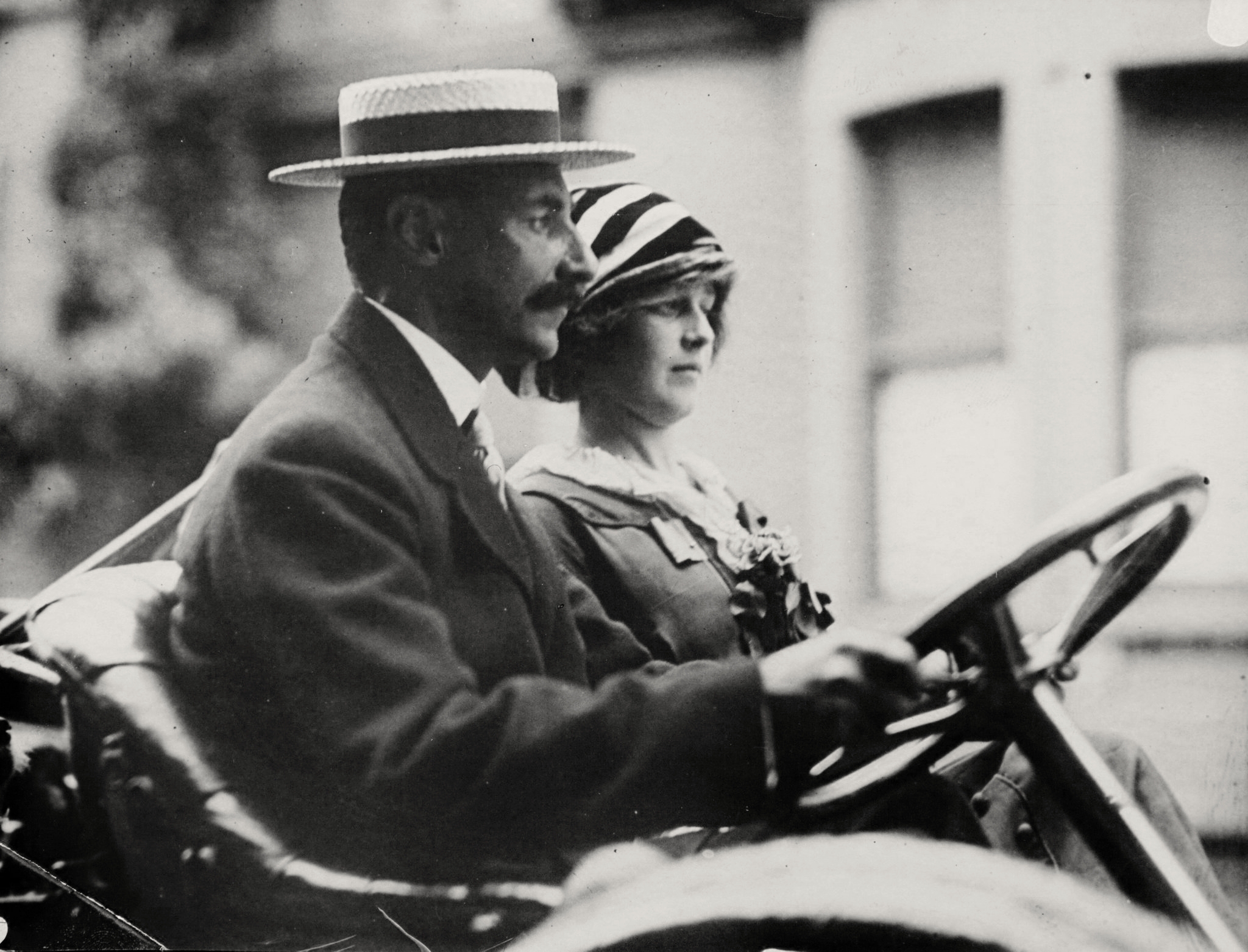 Unknown Author, Wikimedia Commons
Unknown Author, Wikimedia Commons
46. They Made A Perilous Journey
The newest Astor couple took an extended honeymoon that took them traveling as far as Egypt. While abroad, the couple discovered that Madeleine was pregnant. Astor wanted to ensure that his newest child was born in America, so they immediately booked passage on the newest and most extravagant ship: the Titanic.
 Unknown author, Wikimedia Commons
Unknown author, Wikimedia Commons
47. They Fought For Their Lives
The rude awakening that Madeline and Jack Astor received on that fateful night in April 1912 has been stamped into history. Bundled in their warmest clothes, Astor helped his pregnant wife climb through a first-class promenade window to the safety of a lifeboat. He wasn’t as lucky.
 American Zoetrope, Titanic (1996)
American Zoetrope, Titanic (1996)
48. They Were Sunk
Although Astor asked the officer in charge of the lifeboat if he could join his wife, given her condition, the officer refused. The lifeboats were for women and children only. Despite his calm promises that he would see Madeleine in the morning, John Jacob Astor IV was among the hundreds of Titanic victims. If this wasn’t tragic enough, Astor left a shattered and divided family behind.
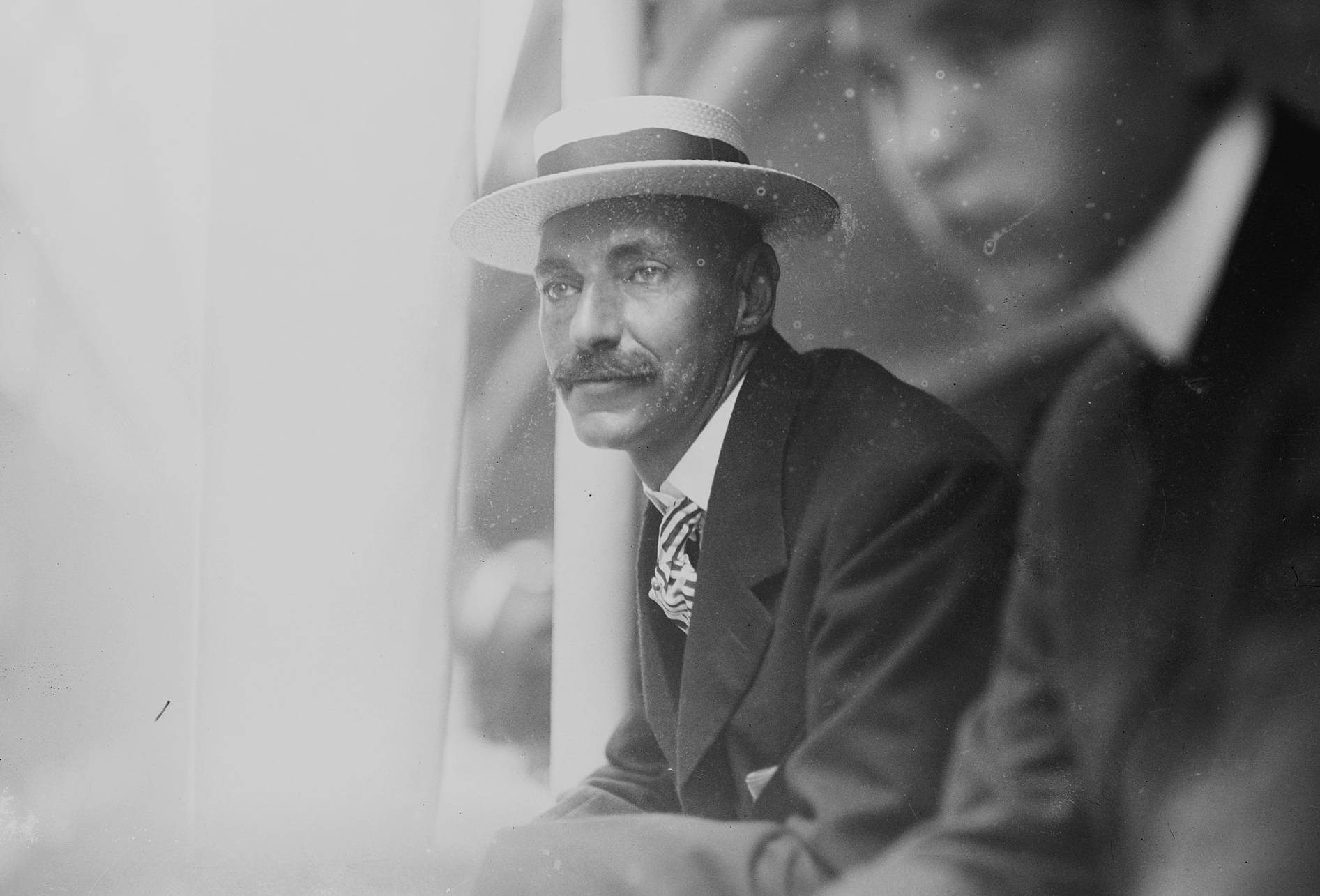 Bain News Service, Wikimedia Commons
Bain News Service, Wikimedia Commons
49. They Birthed Scandal
Three months after surviving the sinking, Madeleine Astor gave birth to the child that his father would never meet: John Jacob Astor VI, known as “Jakey”. Although Jakey survived the sinking, his father’s legacy of scandal would follow him for the rest of his life.
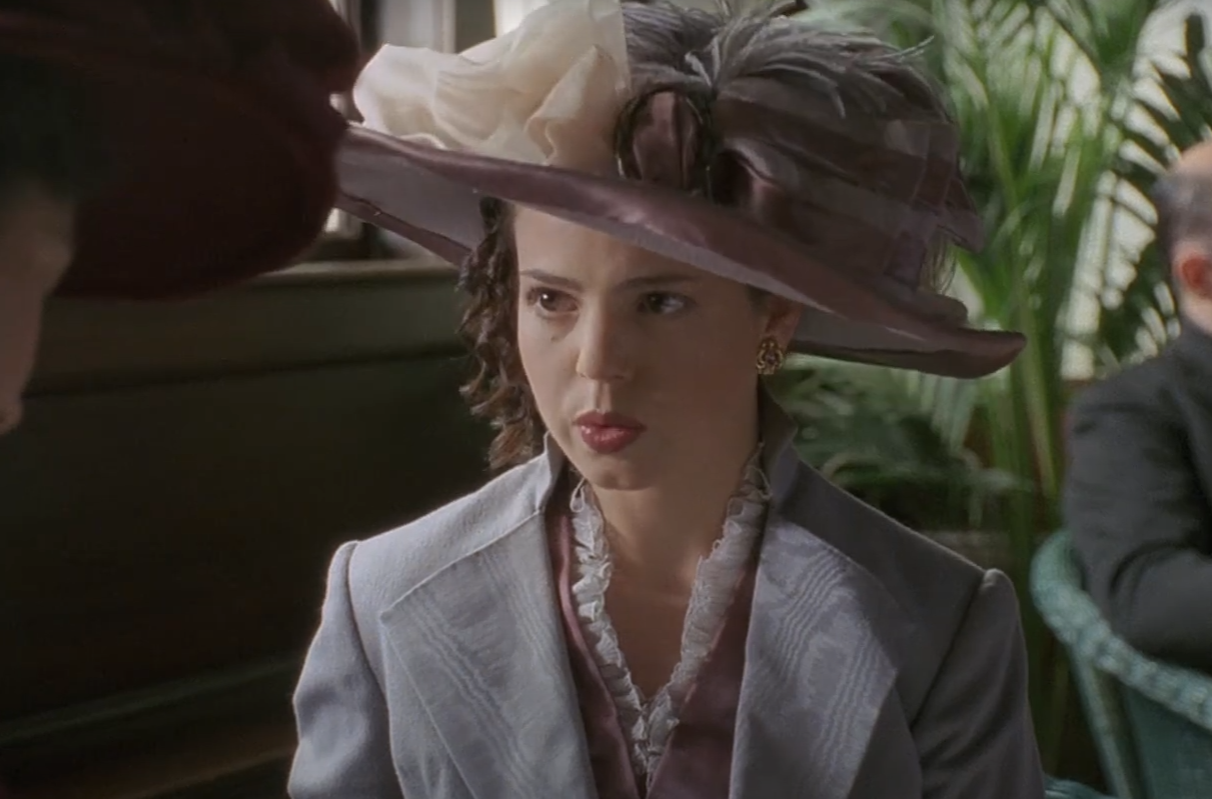 American Zoetrope, Titanic (1996)
American Zoetrope, Titanic (1996)
50. They Made Restrictions
Jack Astor left misfortune in the wake of his passing. Jack did account for his new wife in his will, providing her with some assets from his estate. However, they were relatively small and came with conditions. Madeleine could only continue to access Astor's money if she did not remarry. And what about his unborn son?
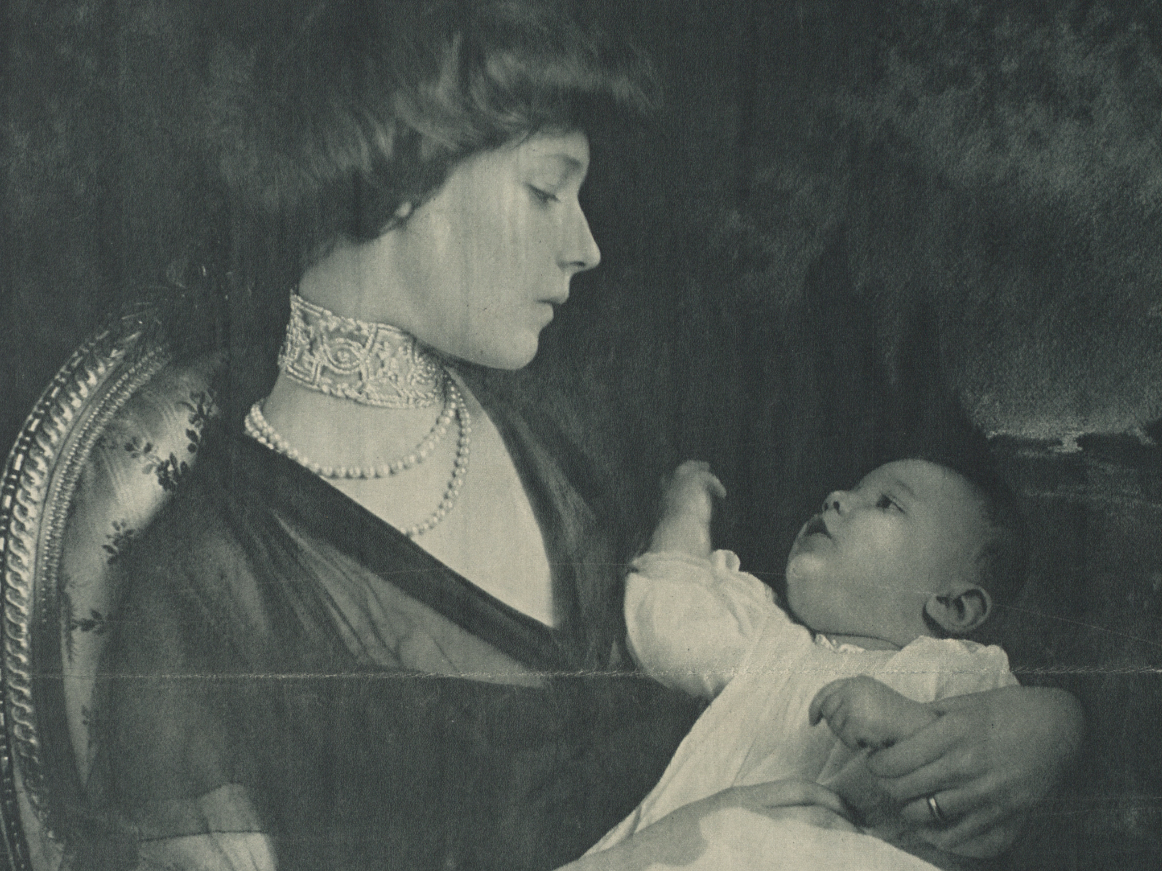 Henry Havelock Pierce, Wikimedia Commons
Henry Havelock Pierce, Wikimedia Commons
51. They Left Behind A Mess
Having just learned about his then-unborn son before boarding the Titanic, Jack Astor had not had time to update his will to include him. Furthermore, he left behind two children from a previous marriage. Even before he was born, Jakey was already at a disadvantage.
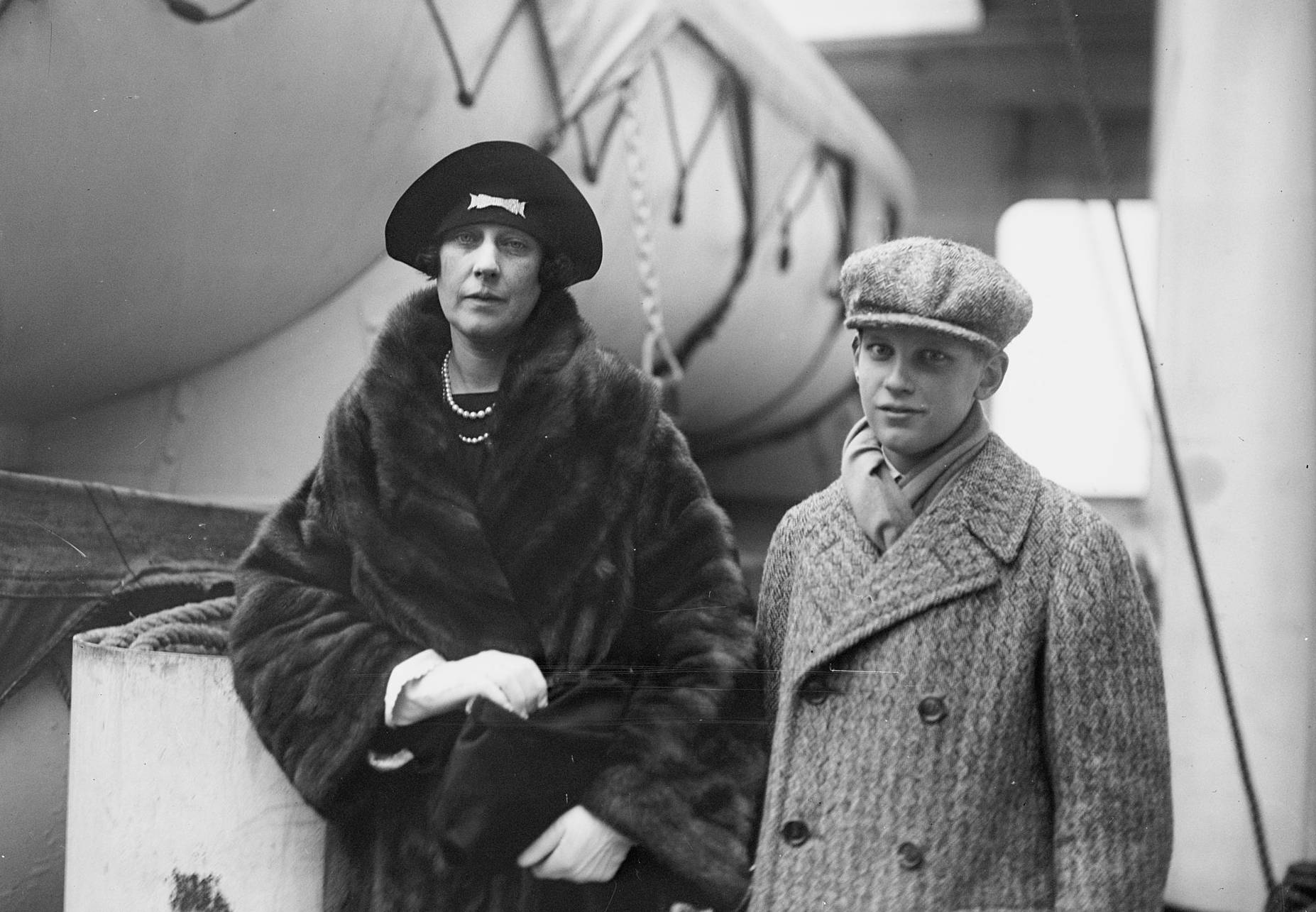 Bain News Service, Wikimedia Commons
Bain News Service, Wikimedia Commons
52. They Created A Divide
Jakey’s father had thought to include a bequest of $3 million for “any other surviving child”. However, Jakey could not access it until he turned 21. The bulk of the Astor fortune went to his elder brother, William Vincent Astor, and Vincent had not forgiven his father for the damage he’d done to their family.
 Benjamin N. Duke, Wikimedia Commons
Benjamin N. Duke, Wikimedia Commons
53. They Questioned Their Legacy
Vincent Astor was 20 when he inherited the bulk of his family’s money, amounting to millions of dollars. Up to this point, The Astor family has carried on growing their wealth at the expense of others. They were, without a doubt, slumlords, even in the 20th century. This didn’t sit well with Vincent.
54. They Changed Their Image
Vincent Astor was something unknown to America at this time, “an Astor with a highly developed social conscience”. He did not enjoy learning that his family benefited from years of other’s suffering. He put the bulk of his family’s wealth into a charitable organization in his name and set about transforming their previous slum housing into property that actually served the people.
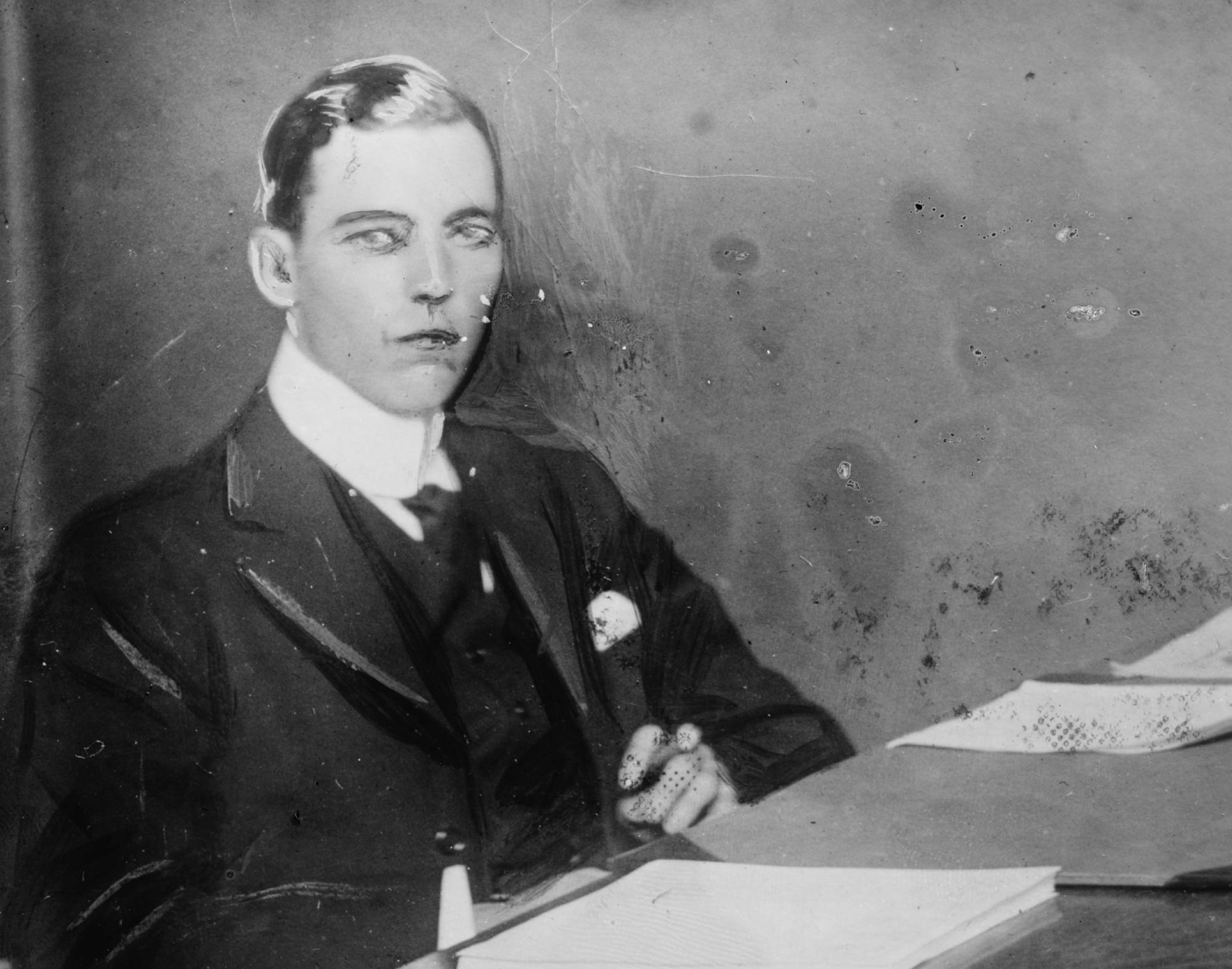 Bain News Service, Wikimedia Commons
Bain News Service, Wikimedia Commons
55. They Weren’t All Good
Although Vincent Astor possessed an altruistic streak the rest of his family lacked, he was an eccentric and often disliked man. Reportedly, he smoked, drank, and was generally unpleasant to be around. He married three times, and while the third stuck, it came about in a strange way.
56. They Were Demanding
Vincent Astor married Roberta Brooke Russell on October 8, 1953—only a month before that, he had been married to his second wife, Mary Benedict Cushing. It was a popular rumor at the time that Astor would only grant Cushing a divorce if she found him another wife to marry. Regardless of the circumstances, this marriage proved profitable for Brooke Astor.
57. They Took Feuds To The Grave
Despite his focus on philanthropic work, when Vincent Astor passed on in February 1959, he still left behind a sizable Astor estate. It was at this time that his half-brother, Jakey Astor, came back into the picture. However, if Jakey expected his time had come to finally inherit his portion of their father’s estate, he was wrong.
58. They Questioned Loyalties
Vincent Astor despised Madeleine, and therefore, he despised his half-brother as well. His contempt for both his stepmother and half-brother went so deep that he was not shy in stating his belief that Jakey was not, in fact, a real Astor. Vincent had no interest in playing nice with the other half of his family or giving them money—but he never could have foreseen that this would lead to the downfall of all the Astors.
59. They Held Grudges
Vincent Astor left his entire estate to his third wife, Brooke Astor—and the cracks that had long existed in the Astor family finally broke open. Jakey said that Vincent, “had the legal, not the moral, right to keep all the money". He was also willing to put his own money where his mouth was.
60. They Tore Themselves Apart
Jakey filed a lawsuit against Vincent’s widow, Brooke, for the inheritance that he felt that he was owed. Vincent was known to drink, so Jakey first claimed that his brother was mentally incompetent due to alcoholism when he signed the final will that cut him out. Brooke countered this, so Jakey went after her next.
61. They Played Dirty
While hospitalized, Brooke would often bring Vincent drinks. Jakey accused Brooke of using this to curry favor with her husband, ensuring that she got the money in the will rather than Jakey. If he thought this would work, then Jakey didn’t know who he was up against.
62. They Underestimated Their Opponents
Brooke Astor was not the sort to back down from a fight. Dressed in her best mourning outfit, Brooke cried in front of the court. She won, and Jakey settled for $250,000, a fraction of what he was owed. Brooke may have defeated Jakey, but she would also bring about the downfall of the Astors.
63. They Didn’t See Their Fall Coming
Brooke Astor was far from a young maiden when she married Vincent. Brooke had been married twice already, and those marriages left their legacy. She had one son, Antony “Tony” Dryden Marshall, from her first marriage. Marshall would be the undoing of not just his mother, but all the Astors.
 Ron Galella, Ltd., Getty Images
Ron Galella, Ltd., Getty Images
64. Their Neglect Caught Up With Them
Brooke Astor’s first marriage to Marshall’s father was difficult. While they escaped that marriage when Marshall was six years old, the tensions from that union carried on throughout each of their lives. Brooke’s attempts to move on from that left her son feeling neglected. That pain only festered as they each got older.
65. They Began To Lose Grip
As Brooke entered the final years of her life, her age began to creep up on her. Around the turn of the millennium, it became clear that Brooke Astor was suffering from Alzheimer’s. As her confusion grew, her son Tony Marshall finally saw his chance for retribution.
66. Their Fortune Was Chipped Away
Once Brooke’s diagnosis was official, Marshall became her power of attorney, giving him complete power over her estate. He isolated his mother to increase his power over her. He sold off her valuables and took her estate. He was chipping away at the Astor fortune one piece at a time.
67. She Was Isolated
Tony Marshall had dismissed every member of staff that Brooke Astor may have had to protect her. He convinced her that she was now poor and left her to live in squalor, counting pennies. The Astors’ great era was on its last legs.
68. They Were Too Late To Be Saved
Brooke Astor’s salvation came from an unexpected place. Tony Marshall had twins from a previous marriage that even Vincent Astor had taken to. It was Marshall’s son who noticed his actions and initiated a lawsuit. Things started to look up for Brooke, and she moved into a comfortable estate. She lived for another year before passing at the ripe old age of 105.
A few months later, Marshall was officially indicted—the damage, however, was done.
69. They’re Only Left With A Memory
Between Jack Astor’s scandal, Vincent’s philanthropy, and Tony Marshall’s theft, the vast Astor wealth and social standing had dwindled to nothing more than a memory. However, it is a memory that continues to live on across the globe. From New York to Oregon and even England, you can still find shadows of what the Astors once were.
You May Also Like:
Money Couldn’t Fix Vincent Astor’s One Fatal Flaw
The Black Sheep Of The Astor Family
The Gilded Age's Most Ruthless Socialite



